













> Inspiring Ontario’s youth toward an exciting career in mining.
> Strolling down Ontario’s Electric Avenue.
> The Centre for Smart Mining turns five.
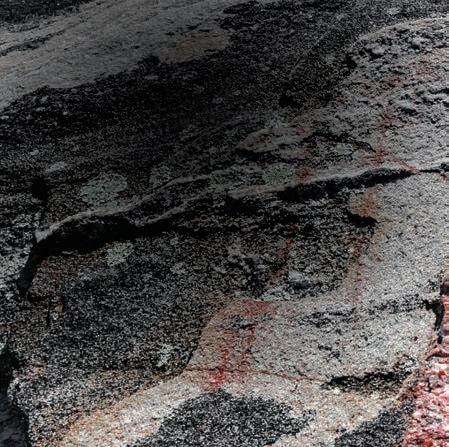

PASSING THROUGH THE RING OF FIRE
SUMMARY OF THE REPORT ON LABOUR TRENDS IN THE CANADIAN MINING SECTOR THE SIDE THAT LEARNS THE FASTEST WILL WIN

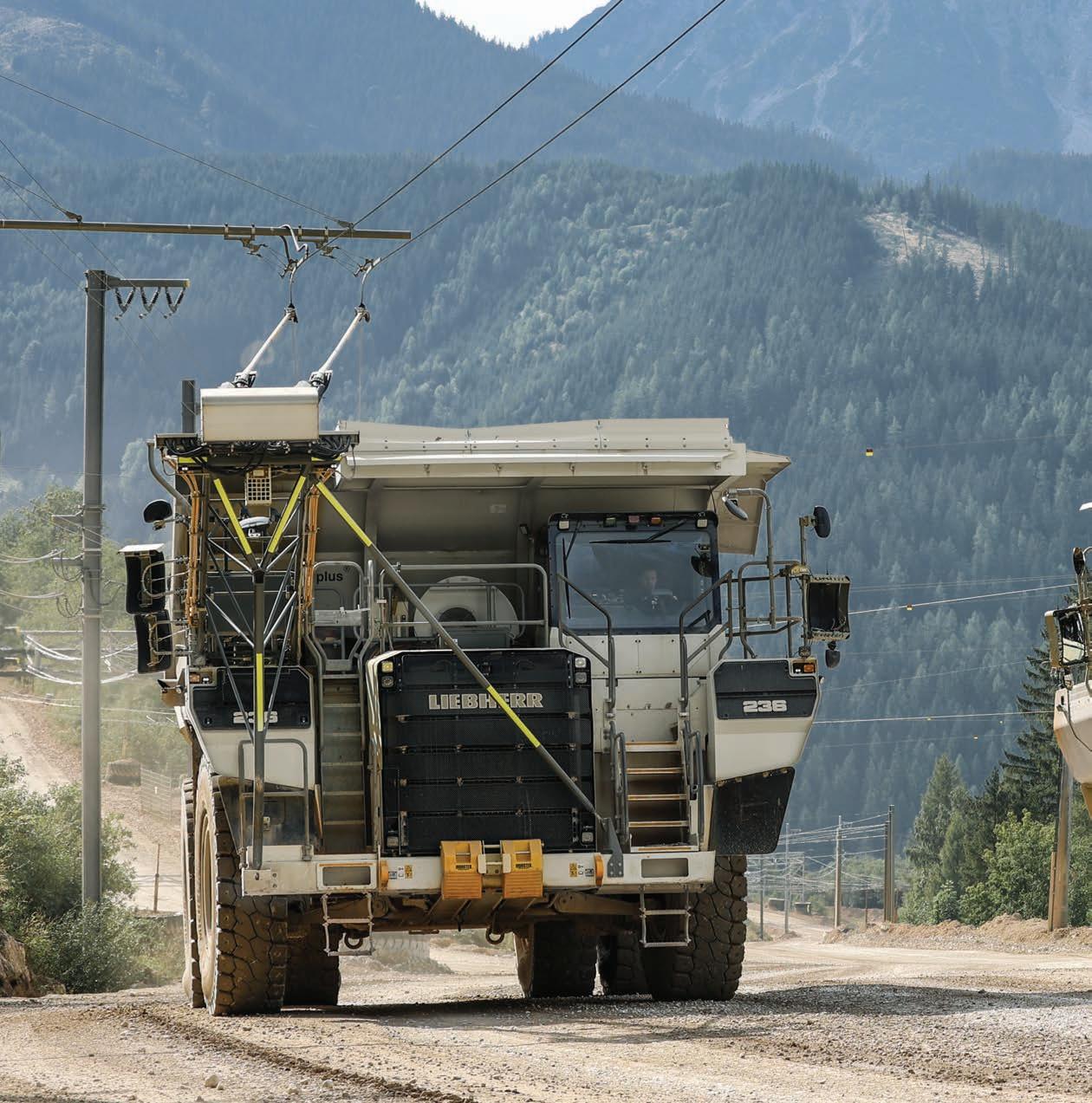
– Conquer steep inclines while minimizing spillage and haul road deterioration with the diesel-electric drivetrain’s constant application of power to ground
– Achieve decarbonization targets with trolley solution compatibility, available as both first fit and retrofit
– Unleash unmatched power with 895 kW of gross power – the highest in the 100-tonne class
– Reduce fuel consumption with optimized engine speed management
Liebherr-Canada
• Phone:
16 Inspiring Ontario’s youth toward an exciting career in mining.
19 Strolling down Ontario’s Electric Avenue.
25 The Centre for Smart Mining turns five.
27 Passing through the Ring of Fire.
30 From a quarry in Ireland to a gold mine in Ontario.
51 History of mining: Cobalt’s boomtown blues.
32 We must decarbonize mining to create clean energy.
35 The 2024 outlook of employee safety technology in the mining industry.
37 What is the correlation between transformational leadership and the profitability of Arizona copper mining companies?
40 Rebranding mining is necessary: Summary of the report on labour trends in the Canadian mining sector.
43 The side that learns the fastest will win.
45 Time is money: Why it pays to be strategic with mining tire service work.
47 A highly responsive conveyor belt tracker.
49 Reviewing the pros and cons of polyurethane and high-vibration screen media.
4EDITORIAL | Ontario: A place for mining to grow.
4LETTER TO THE EDITOR |
6FAST NEWS | Updates from across the mining ecosystem.
8 LAW | The federal and provincial governments’ initiatives to help the EV battery supply chain and critical minerals strategy.
10UNEARTHING TRENDS | British Columbia’s mineral exploration in 2023.
12MIN(E)D YOUR BUSINESS | Where is British Columbia going with mineral tenure reform following the Gitxaala decision?
53ON THE MOVE | Tracking executive, management, and board changes in Canada’s mining sector.
www.canadianminingjournal.com

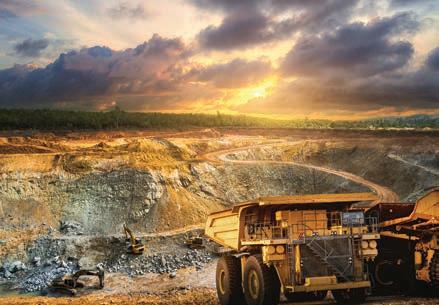


Front
Coming in April 2024
Canadian Mining Journal’s April issue will tie-in BEVs, mine electrification, and the hunt for the critical minerals to fuel de-carbonization. The issue will include a report on haulage and transportation.
For More Information
Please visit www.canadianminingjournal.com for regular updates on what’s happening with Canadian mining companies and their personnel both here and abroad. A digital version of the magazine is also available at https://www.canadianminingjournal.com/digital-edition/
 Tamer Elbokl, PhD
Tamer Elbokl, PhD
ccording to the annual BloombergNEF’s Global Lithium-Ion Battery Supply Chain Ranking, Canada has overtaken China for the top spot in the ranking, which rates 30 countries on their potential to build a secure, reliable, and sustainable lithium-ion battery supply chain. Also, in another good news this week, energy minister, Jonathan Wilkinson, announced that Canada plans to boost its energy security by slashing the time it takes to develop new critical mineral mines by nearly a decade with improved permitting processes.
Canada’s position in the ranking is improving due to policy commitment at both the provincial and federal level. Obviously, lithium-ion batteries need lithium mining. The article on pages 19-24 offers updates on current lithium mining projects in Ontario and explains how there is a generational opportunity for Ontario to become a lithium exploration powerhouse. With an ongoing land acquisition fever by several junior mining companies, Ontario could soon emerge as a big player in lithium production, which could help reduce the global lithium market’s volatility.
Articles on pages 16-31 provide updates on mining in Ontario, which is the main topic in this issue. Additionally, our History of Mining article on page 51 discusses the story of Cobalt, Ont. Flip to pages 35-44 for articles that explore the latest topics and case studies on recruitment, training, and careers as well as health and safety in mining.
If you are planning to attend the Prospectors and Developers Association of Canada (PDAC) 2024 convention in Toronto, Mar. 3-6, please visit our booth to pick up a hardcopy of this issue; we will be in booth # 808.
Finally, our April issue will tie-in BEVs, mine electrification, and the hunt for the resources to fuel de-carbonization. Editorial contributions will be accepted until Mar. 8, 2024, and should be sent to the Editor in Chief. CMJ
In response to an article published in December 2023/January 2024 issue of the Canadian Mining Journal, entitled, “The rise of resource nationalism in the global critical minerals industry,” I would like to point out that the governments of Canada and British Columbia essentially nationalized a major cobalt-copper deposit in B.C. by incorporating it into a park in 1994. This deposit is Windy Craggy. This was done without any involvement or consultation with the First Nation on whose traditional territory this deposit is located. Now, both governments are promoting the development of critical minerals and planning to make sure to include Indigenous participation. If both governments are serious, then they would review their 1994 decision and allow this deposit to be developed.
Windy Craggy has a 1992 non-NI 43-101 compliant historical resource estimate of 297,400,000 tonnes: 1.38% Cu, 0.069% Co, 0.20 g/t Au, and 3.83 g/t Ag, using a 0.5% copper cut-off grade. This estimate should be considered a minimum, as a new zinc-rich zone was discovered at the end of latest drilling campaign in 1990. This deposit would be considered as the largest of the resources of cobalt and copper in North America that are listed under both British Columbia and Canada critical minerals designation.
I have been involved with the Windy Craggy project since 1975 and was project geologist from 1989 to 1992. I have been engaged with Mr. James Allen (former chief of Champagne Aishihik First Nation) since 2011 regarding this project, and together we have compiled a list of benefits for all stakeholders with a positive and innovative way forward.
— Bruce Downing, MSc, P Geo, FGC, FEC (hon)FEBRUARY/MARCH 2024
Vol. 145 – No . 1
69 Yonge St., Ste. 200, Toronto, ON M5E 1K3
Tel. (416) 510-6789 Fax (416) 510-5138
www.canadianminingjournal.com
Editor in Chief
Dr. Tamer Elbokl
telbokl@canadianminingjournal.com
News Editor
Marilyn Scales
mscales@canadianminingjournal.com
Production Manager
Jessica Jubb
jjubb@northernminer.com
Advisory Board
David Brown (Golder Associates)
Michael Fox (Indigenous Community Engagement)
Scott Hayne (Redpath Canada)
Gary Poxleitner (SRK)
Manager of Product Distribution
Allison Mein
416-510-6789 ext 3 amein@northernminergroup.com
Publisher & Sales
Robert Seagraves
416-510-6891 rseagraves@canadianminingjournal.com
Sales, Western Canada
George Agelopoulos
416-510-5104 gagelopoulos@northernminer.com
Toll Free Canada & U.S.A.:
1-888-502-3456 ext 2 or 43734
Circulation Toll Free Canada & U.S.A.: 1-888-502-3456 ext 3
President, The Northern Miner Group
Anthony Vaccaro
Established 1882
Canadian Mining Journal provides articles and information of practical use to those who work in the technical, administrative and supervisory aspects of exploration, mining and processing in the Canadian mineral exploration and mining industry.
Canadian Mining Journal (ISSN 0008-4492) is published nine times a year by The Northern Miner Group. TNM is located at 69 Yonge St., Ste. 200, Toronto, ON M5E 1K3. Phone (416) 510-6891.
Legal deposit: National Library, Ottawa. Printed in Canada.
All rights reserved. The contents of this magazine are protected by copyright and may be used only for your personal non-commercial purposes. All other rights are reserved and commercial use is prohibited. To make use of any of this material you must first obtain the permission of the owner of the copyright. For further information please contact Robert Seagraves at 416-510-6891.
Subscriptions – Canada: $51.95 per year; $81.50 for two years. USA: US$64.95 per year. Foreign: US$77.95 per year. Single copies: Canada $10; USA and foreign: US$10. Canadian subscribers must add HST and Provincial tax where necessary. HST registration # 809744071RT001.
From time to time we make our subscription list available to select companies and organizations whose product or service may interest you. If you do not wish your contact information to be made available, please contact us via one of the following methods:
Phone: 1-888-502-3456 ext 3; E-mail: amein@northernminergroup.com
Mail to: Allison Mein,
69 Yonge St., Ste. 200, Toronto, ON M5E 1K3
We acknowledge the financial support of the Government of Canada.
“RELENTLESS PURSUIT TO END OCCUPATIONAL HEALTH
AND IMPROVE WORKER SAFETY.”

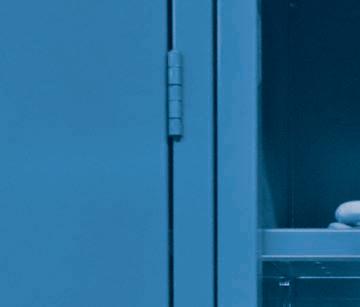
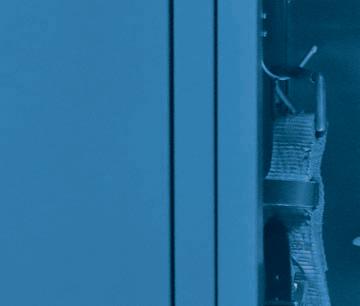





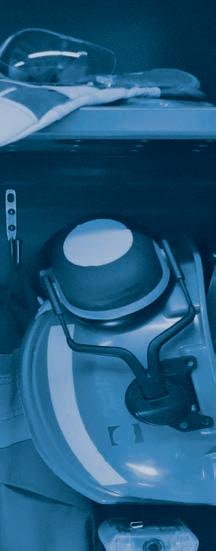




The Vigilante AQS™ accurately measures airflow, worker heat stress, gas concentrations, and air particulate matter – reducing downtime and enabling miners to return to the face sooner and safer.


Every shift, every day, every miner – home safe. Everyone Safe – Guaranteed.


The process of devolution has been long time coming to the territory of Nunavut since it was founded in 1999. In a historic move last week, the Canadian government signed over responsibility for control over all the lands, resources, water, and wildlife to the territorial authorities.
Nunavut was the last of the three Canadian territories to take control of its resources – and there are many. The territory covers 2.1 million km2, roughly the size of Greenland. Agnico Eagle Mines mines gold at the Meadowbank-Amaruq complex near Baker Lake and the Meliadine mine in the Kivalliq District. Baffinland Iron Mines, which is 25% owned by ArcelorMittal, operates the Mary River iron ore mine near Pond Inlet.
Former producers include the Nanisivik zinc-lead mine, Polaris zinc-lead mine, Lupin gold mine, and Jericho diamond mine. The potential remains for new discoveries, even if there are virtually no roads or infrastructure in the territory. Nunavut covers 20% of Canada’s landmass (and only 40,000 of its citizens), making this the largest land transfer deal in Canadian history.
Royalties from natural resources will begin to flow to the territorial coffers rather than the federal government. There is a sliding scale of federal funds to be transferred. This year’s transfer is $2.1 billion, but it will be reduced as royalties begin to replace part of it.
Spanish Mountain Gold has begun a new metallurgical testing program to assess a coarser grind on samples from its Spanish Mountain project near Williams Lake, B.C.
“We are excited about this new program which may show that a coarser grind decreases power consumption, improves downstream processes such as tailings and water management, and favourably impacts costs and production,” said president and CEO Peter Mah.
The Spanish Mountain prefeasibility study was completed in 2021. It demonstrated annual production of 180,000 oz. of gold over the first six years and 150,000 oz. over the life-of-mine. Costs
were estimated at US$707/oz. over the first six years and US$801 over the mine life. Capex requirements were set at US$461 million ($607 million) for an open pit mine and 20,000 t/d mill.
The measured and indicated resource at the project is 294 million tonnes grading 0.50 g/t gold (4.7 million oz.) and 0.72 g/t silver (6.8 million oz.) using a cut-off of 0.15 g/t gold. The inferred resource is 18 million tonnes at 0.63 g/t gold and 0.76 g/t silver.
Within the resources are proven and probable reserves of 95.9 million tonnes grading 0.76 g/t gold (2.3 million oz.) and 0.71 g/t silver (2.2 million oz.) For reserves, a cut-off of 0.3% g/t gold was used. CMJ

The process of devolution will take three years. It is to be complete on April 1, 2027. The feds have pledged $15 million to the territory to make this happen. There are federal lands and buildings to be turned over, and the workers in those buildings will become territorial employees, for the most part. It is anticipated that Nunavut residents will have to train in fields such as land management, ecology, and sciences to replace all the work done in Ottawa on behalf of the territory. CMJ
The Windfall gold project is now powered by hydroelectricity. The 95-km-long, 69 kV power line built, owned, and operated by Waswanipi Cree First Nation has been connected to the project. The move away from diesel power generation for the camp and underground mine will reduce both power costs and greenhouse gas emissions at the site.
Windfall is a 50:50 joint venture of Osisko Mining and Gold Fields, with Osisko as the operator. The property is located in the Abitibi Greenstone Belt, Eeyou Istchee James Bay, Que., 700 km north-northwest of Montreal. The property lies within the traditional territory of the Waswanipi Cree First Nation.
Osisko says the Windfall environmental impact assessment review is ongoing, and the impact and benefits agreement is expected to be finalized this year with the Cree Nation government and Waswanipi Cree First Nation. CMJ
Seabridge Gold has updated the prefeasibility study (PFS) for its 100%-owned Courageous Lake open pit project in the Northwest Territories, creating a more sustainable and profitable operation than the earlier PFS done in 2012. The new PFS led by Ausenco demonstrates the production of 2.5 million oz. of gold over an initial 12.6-year mine life.
Everything that should go up is up, and that which should be lowered is lower. The study increased gold reserves in the measured and indicated resource by 39% to 11 million oz. Courageous Lake now has an after-tax net present value (NPV) with a 5% discount of US$523 million, an internal rate of return (IRR) of 20.6%, with a 2.8-year payback. Annual production will be 201,000 oz. of gold at
 CREDIT: SEABRIDGE GOLD
CREDIT: SEABRIDGE GOLD
an all-in sustaining cost of US$999 per ounce, in the lowest quartile of the World Gold Council cost curve.
The PFS also highlights a 73% increase in the after-tax NPV 5% to US$523 million, a 50% reduction in initial capital to

New Found Gold has received the results of 16 diamond drill holes that tested the Honeypot zone, part of the Queensway gold project 15 km west of Gander, Nfld. The zone was discovered last year 230 metres north of the Jackpot zone and on the east side of the Appleton fault zone.
Here are highlights from Honeypot: 26.35 g/t gold over 7.65 metres, including 101.72 g/t over 1.8 metre and 24.06 g/t over 0.5 metre; 2.05 g/t gold over 14.7 metres; 6.70 g/t gold over 6.2 metres, including 16.93 g/t over 0.5 metre and including 17.24 g/t over 1.1 metre, and separately 1.5 g/t over 2 metres; and 23.05 g/t gold over 5.3 metres, including 71.42 g/t over 0.5 metre, 67.99 g/t over 1 metre, and 11.39 g/t over 1 metre.
Gold at Honeypot is hosted within a primary fault that has been defined by drilling over a strike length of 280 metres to a depth of 190 metres. The domain shows good continuity, and the grade appears higher at depth.
No NI 43-101 compliant resource estimate has been completed. CMJ
US$747 million, and an increased aftertax IRR to 20.6% from 7.3%. The average gold reserve grade increased 19% to 2.6 g/t, and the life of mine strip ratio was reduced 39% to 7.58. The increase for contained gold in measured and indicated resources rose to 11 million oz., up 38% from 8 million oz. in 2012.
Seabridge chair and CEO Rudi Fronk estimated that the PFS covers only 30% of the Courageous Lake resources identified. Therefore, the project has considerable potential to exceed the original 12.6year mine life.
The Courageous Lake property is located 240 km northeast of Yellowknife, NWT, and is situated within the Courageous Lake greenstone belt (CLGB) in the Slave Structural Province. CMJ
• INVESTMENT | Samsung SDI acquires 8.7% stake in Canada Nickel, has right to buy 10% of
Samsung SDI has become the latest company to invest in Canada Nickel, which is developing the Crawford nickel sulphide project in the Timmins-Cochrane mining camp of Ontario.

Samsung intends purchase US$18.5 million worth of Canada Nickel’s common shares at a price of C$1.57 per share. Upon closing, Samsung will own approximately 8.7% of the company’s outstanding share capital. The battery maker will also be granted the right to purchase a 10% equity interest in the Crawford project for US$100.5 million. This would give Samsung the right to 10% of the nickel-cobalt production from the Crawford project over the life of mine, and the right to an additional 20% of production for 15 years, extendable by mutual agreement.
Crawford is currently host to the world’s second-largest nickel resource, totalling 2.46 billion tonnes at 0.24% nickel for 13.3 billion lb. of contained nickel, according to a feasibility study issued in October.
Uniquely, the mine will be a net negative contributor to global carbon dioxide (CO2) emissions, thanks to its ability to geologically sequester 1.5 million tonnes of carbon per year. There will also be room to capture and store 30 million tonnes of carbon from third parties. CMJ



The federal government of Canada released its 2023 fall economic statement (the FES) in November 2023, reiterating key pillars of the 2023 federal budget, namely its ambitious plans to support and grow Canada’s electric vehicle (EV) battery supply chain and critical minerals industry. The FES outlines the government’s achievements and commitments in securing major investments, cutting red tape, and improving market access for these strategic sectors, with a view to create and protect middle-class jobs, spur innovation, and enhance Canada’s competitiveness and leadership in the clean economy.
The government’s formal push for growth in this area officially began in April 2022 with its 2022 federal budget, wherein the government committed to fund $3.8 billion over eight years to implement Canada’s first critical minerals strategy. A key part of the strategy is to accelerate project development through faster regulatory reviews and permitting decisions. Developing a mine in Canada can take a very long time (in the range of 10-15 years on average), as compared to other jurisdictions with similar legal systems that benefit from shorter timeframes. For example, Australia has focused on streamlining and consolidating its approval process over the last few years, a much-needed focus here in Canada. As most Canadian projects are in the early stages of development, most of the minerals required for North America’s energy transition may ultimately need to come from other countries if Canada and its provinces are not aligned on improving competitiveness in bringing critical minerals to market.

In 2022, the government committed to fund $3.8 billion over eight years to implement Canada’s first critical minerals strategy.
In response to this issue, provincial government initiatives like Ontario’s proposed changes to its mining regulation, aimed at speeding up mine approvals, are starting to take place. These proposed changes would make it easier to obtain permits and loosen some existing restrictions without compromising environmental standards. More recently, the Ontario Ministry of Mines launched two public consultation initiatives seeking input on proposals to improve the mineral exploration assessment work regime and the exploration plans and permits regime. These initiatives aim to streamline regulatory processes and ensure competitiveness in the global mining sector, but additional measures to accelerate exploration and development of Canadian critical minerals projects are necessary and should be expected as demand continues to grow.
Demand for critical minerals has grown exponentially in recent years, significantly outpacing the rate of supply, which has become a pressing concern. By some estimates, global demand for critical minerals for clean energy technologies will double by 2030. The federal government’s most recent update to its zero-emission schedule set out that auto manufacturers and importers must meet annual zero-emission vehicle regulated sales targets. The targets begin with a requirement that at least 20% of all new cars, SUVs, crossovers, and light-duty pickup trucks offered for sale in Canada in 2026 emit zero emis-
sions. The requirements increase annually towards 60% by 2030 and 100% by 2035.
In response to growing demand, governments, miners, and car manufacturers have started to form partnerships to secure reliable and sustainable critical mineral supply chains. Since 2020, the federal government has secured more than $34 billion in investments in the batteries and automotive supply chain, including landmark battery manufacturing facilities by Volkswagen and Stellantis-LGES in Ontario during the first and second quarters of 2023.
The federal government has placed a strong emphasis on developing domestic supply chains to reduce dependence on foreign sources and ensure a stable supply. However, the success of these supply chains will ultimately depend on the rate at which critical minerals can be extracted from the ground and supplied up the chain.
Canada has long been seen as a global mining leader, with an abundance of essential critical minerals. While Canada’s mining sector ranks second among Bloomberg NEF’s scoring of 10 leading critical mineral producers, it is essential that Canadian projects are able to move at a faster pace if we are to capitalize on what has been said to be a generational opportunity for
Canada to become a leader and global supplier of choice in the clean energy transition. Put simply, to compete in this race, Canada must pick up the pace.
To that end, the federal government has announced that, by the end of 2023, it will outline a concrete plan to further improve the efficiency of the permitting and impact assessment processes for major projects, which will include clarifying and reducing timelines, mitigating inefficiencies, and improving engagement and partnerships. In Ontario, the ministry began a similar process intended to improve the local regime to boost Ontario’s competitiveness. We already have the strategy and the budget and are now eagerly awaiting details of the plan that may help propel Canada towards becoming a leader in the global race to bring critical minerals to market. Our ability to implement at this stage will be critical considering the targets and impending deadlines that have been set. Time is of the essence. CMJ
Michael Sabusco is a partner in Dentons Canada’s Corporate, Securities, and M&A groups, and the Ontario lead of the firm’s National Mining group. Greg McNab is a partner in Dentons Canada’s Corporate group and the co-lead of the firm’s National Mining group. Jaskaran Grewal is an associate in Dentons Canada’s Corporate, Securities, and M&A groups.

Coming off the back of record interest rate hikes by the United States Federal Reserve and geopolitical tensions in 2022, significant economic turbulence was expected in 2023. As the year progressed and the effects of measures taken by central banks across the world set in, as well as increasing geopolitical strife and uncertain economic conditions in the world’s largest economies, commodity prices experienced wide-ranging effects. While the price of gold recorded historic gains throughout the year, 2023 left a lackluster mark on base metals. Copper prices closed the year at roughly the same level as it opened, while lead and zinc fell by around 10%.
With this global context in mind, the “British Columbia Mineral and Coal Exploration Survey” found that the province saw its first year-over-year decline in exploration budgets in nearly 10 years. Exploring the key trends and state of the industry, the survey shares three takeaways.
Despite exploration decreases, the industry achieved its third-highest expenditure in the past 10 years. The exploration spending for the year reached $643 million, marking a 13% decline from the record $740 million set last year. This year-over-year decrease is the first since 2015-2016 when exploration spending dropped by 25%. This dip aligns with the global trend in exploration spending for 2023, with a reported 3% year-over-year decrease from 2021.
The decline in exploration activity is further evident in the total metres drilled, which fell by 35%, dropping from 1,150,000 metres in 2022 to 748,000 metres in 2023. This continuation of decreasing drilling activity in the province mirrors the trend observed from 2021 to 2022, which saw a 20% year-overyear decrease. This aligns with global
By Iain Thompson
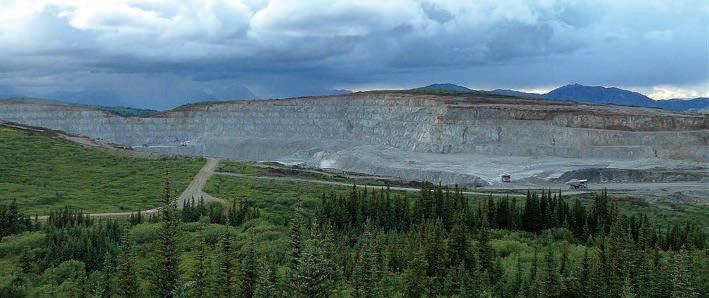
Exploration interest in copper within the province outpaced that of gold.
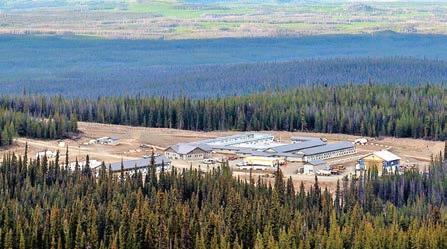
patterns, as reported at the time, indicating six consecutive quarters of declining projects drilled worldwide.
Despite this, B.C. demonstrated resilience by maintaining its third-highest expenditure over the past decade, highlighting the robust nature of the mineral exploration industry in the province.
Regionally, the northwest region, known for its abundance of porphyry and precious metal deposits, remains the focal point of exploration in B.C., contributing to 69% of the province’s exploration spending. This reinforces the ongoing trend of heightened attention in the region, with it representing 61% and 56% of provincial exploration spending in 2022 and 2021, respectively.
2 | Interest shift: copper thrives as precious metals falter
Although the price of copper did not enjoy the same highs throughout 2023 that the
price of gold did, exploration interest in copper within the province outpaced that of gold. Spending in the gold sector fell by 23% from $422 million in 2022 to $326 million in 2023. This follows three years of consecutive increases in provincial exploration spending in the sector.
The impact of this decreased overall exploration spending was softened by the continued interest in copper exploration, which saw a 4% increase in spending from $234 million in 2022 to $244 million in 2023. The surge in spending primarily targeted established deposits rather than grassroots opportunities. Specifically, 71% of the expenditure on copper exploration was directed towards projects in the later stages of the exploration lifecycle. In contrast, the percentage
of total copper exploration spending allocated to later-stage projects was 56% in 2021 and increased to 64% in 2022.
This continued interest in copper, largely channelled towards established deposits in later exploration stages, suc-
als essential for fulfilling national and corporate decarbonization commitments will remain steadfast.
These opposing forces may cause exploration budgets to hover around similar levels next year; however, the


cessfully mitigated the impact of the overall decrease in exploration spending, underscoring copper’s growing significance within the industry.
3 | Pivoting to established projects amidst rough financing waters
Global exploration budgets for grassroot projects fell 10% in 2023, hitting a recordlow share of global budgets at 23%, furthering a global shift away from grassroots exploration. This risk-averse behaviour displayed globally by explorers was also seen in B.C., where only 35% of overall exploration spending was for projects in the earlier stages of the exploration lifecycle (grassroots and early stage), which represents a 4% decrease from the share held in 2022 (39%).
The shift can be attributed to the increasingly difficult financing conditions confronting junior exploration firms due to stricter monetary controls. Meanwhile, junior companies with well-developed projects and major players are focused on expanding current deposits and addressing tasks such as permitting, environmental compliance, and consultation.
Looking ahead: Steadfast metal demand amidst storms of 2024
While various headwinds, such difficult financing conditions and geopolitical turbulence, may slow down the global economy in 2024, the demand for critical met-
eventual need for new resources with the appropriate pathways to production will result in the need for continued exploration. CMJ
Iain Thompson is the mining and metals consulting leader at EY Canada, based in Vancouver.
The British Columbia Mineral and Coal Exploration Survey is a joint initiative between the government of British Columbia’s Ministry of Energy, Mines, and Low Carbon Innovation (EMLI), the Association for Mineral Exploration (AME), and EY Canada. For more information visit www.ey.com/ ca/bcminingsurvey.

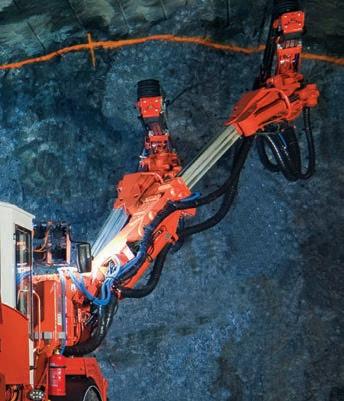

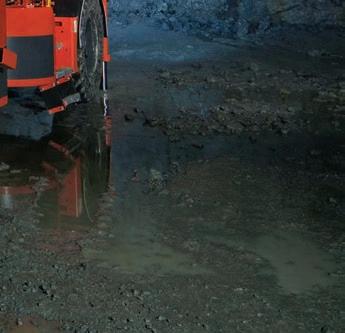




British Columbia’s mineral claims system is regulated under the “Mineral Tenure Act.” This act provides an electronic online registration system that allows the grant of mineral claims to “free miners.” The free miners can then acquire mineral claims by using the province’s “Mineral Titles Online Registry” to select cells on a map and pay a fee to obtain a claim.
Ever since the Yukon Court of Appeal’s 2013 decision in “Ross River Dena Council versus the government of Yukon, 2012 YKCA 14,” there has been debate about whether the B.C. mineral claims staking regime comported with the Crown’s duty to consult Indigenous groups.
That question has now been answered by Justice Ross of the B.C. Supreme Court, who concluded in “Gitxaala versus British Columbia (Chief Gold Commissioner), 2023 BCSC 1680,” that B.C.’s existing mineral staking regime was not consistent with the Crown’s duty to consult.
Justice Ross’ lengthy ruling can be summarized as follows:
> A duty to consult is triggered by B.C.’s mineral tenure staking system because it causes adverse impact on areas of significant cultural and spiritual importance to First Nations and the rights of First Nations to derive financial benefit from the minerals within their claimed territories.
> The Chief Gold Commissioner has the discretion to create a new structure for staking mineral claims that incorporates consultation with First Nations.
> The United Nations Declaration on the Rights of Indigenous Peoples (UNDRIP) and the subsequent Declaration on the Rights of Indigenous Peoples Act (DRIPA) do not have the effect of implementing UNDRIP as law, and DRIPA does not create an ability to take the government to court if any other laws are inconsistent with UNDRIP.
The province elected not to appeal the ruling.
Given the obvious consequences of the decision, the court suspended its declaration by 18 months to give B.C. government time to “allow the design and implementation of a program of consultation,” noting presciently, “I do not know what that program will look like, but it will not happen tomorrow.”
The court also appeared alive to the fact that any workable system will need to be developed in consultation with all interested parties – not in a backroom. Justice Ross concluded his judgment by noting the importance of negotiation and emphasizing that the province, First Nations, and the mineral exploration industry are all here to stay.
The purpose of this article is to assess the status of the gov-
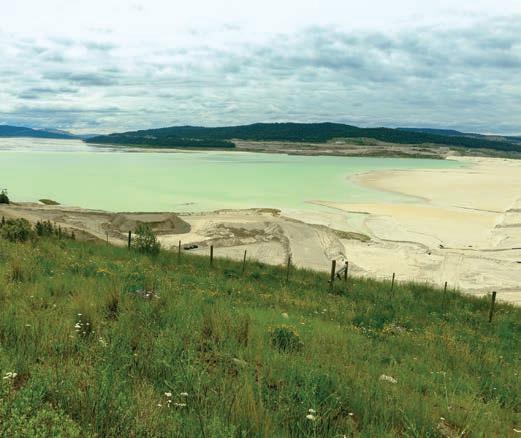
ernment’s related engagements with affected parties, and to discuss some of the important issues that will have to be considered – many of which are not obvious from a reading of the Mineral Tenure Act or the Gitxaala decision. While important to any party planning mineral exploration in B.C., the decision also has the potential to affect the mineral tenure regimes in other provinces as well, if and as related litigation is brought forward.
Any discussion of how to reform the mineral staking system post Gitxaala must be understood in the context of discussions that had already started well before the decision was rendered. More specifically, the province has been examining some form of mineral tenure review for some time, though little information has been made publicly available.
Nothing of relevance can be readily found on the B.C. ministry of energy, mines, and low carbon innovation website; however, government officials have referred to such an exercise. For example, in a recent decision rejecting one of our clients’ exploration permit applications, the statutory decision-maker wrote:
“I also acknowledge that there is opposition by... First Nations with the mineral tenure regime in B.C. The decisions and engagement process for any future tenure applications fall outside the scope of this decision.”
In January 2022, the B.C. First Energy and Mining Council issued a report titled, “Indigenous sovereignty: Consent for mining on Indigenous lands.” It contained numerous recommendations to government regarding reform of the mineral tenure regime. These included the following:
> Indigenous Governing Bodies (IGBs) should exercise statutory powers under the Mineral Tenure Act;
> Crown free miner certificates should only be issued with IGBs consent;
> Registration of a mineral or placer claim should only grant the right to explore for minerals;
> IGBs could develop and administer their own claim staking processes; and
> IGBs should restrict the use of surface rights, regardless of who holds a mineral or placer claim.
The Association for Mineral Exploration (AME) has a webpage titled, “Mineral Tenure Act modernization: What you need to know.” It was posted before the Gitxaala decision –though it appears it has been updated since. It discusses various issues, but it provides no specific insight as to what, if any, consultations the government was undertaking with AME on this reform exercise.
In the Gitxaala decision, the court noted that B.C. had submitted certain evidence regarding its prior efforts toward modernizing the mineral tenure regime, and that consultations were undertaken between 2017 and 2019. None of the
evidence noted by the court appeared to go directly to the issue of consulting on the staking of claims, and the Court noted, “… the ministry decided to pause the process with the idea that the province would later incorporate the concepts into broader work being planned and undertaken pursuant to DRIPA.”
If it is difficult to find information about the Mineral Tenure Act modernization discussion that pre-dated Gitxaala, it is even harder to find any information about engagements being undertaken after the decision.
The sole statement found from the minister of energy, mines, and low-carbon innovation notes only that efforts related to reform of the Mineral Tenure Act are building on the collaboration with First Nations, industry, and communities. But the announcement gave no particulars about any consultations undertaken or planned. It also noted the process would be with an eye to reconciliation and “most importantly” aligning the act with UNDRIP. But the Court did not order the government to change the process to align with UNDRIP; in fact, the court expressly ruled the UNDRIP is not the law of B.C. What the Court did order is for B.C. to amend its staking process to better comport with the Crown’s duty to consult. Remarkably, there was no mention of that in the minister’s statement.
continued on page 14






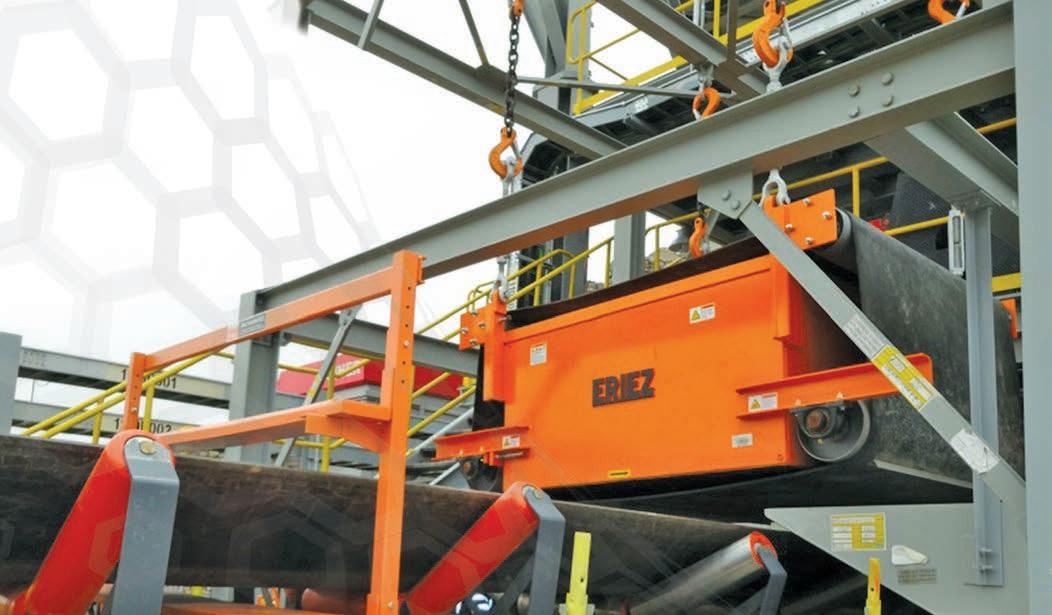
While there can be no doubt that any reform of the mineral tenure regime will be complex, it is imperative that a fulsome and open dialogue takes place that involves all interested parties. Additionally, it is necessary to ensure that consideration is given to both legal and practical aspects of any changes to the claim staking system. Some of the key issues and questions that will need to be considered include the following (and there are surely many more than would come forward in a robust consultation):
1 Will large swaths of B.C. be closed to exploration entirely –either temporarily or permanently – based on planning level (i.e., not claim specific) consultations undertaken between Indigenous groups and government?
2 If a party seeks to register a claim and, during the Indigenous consultation process, another party seeks to do the same, will the first applicant receive priority even if its consultation process takes longer?
3 Will the Crown encourage companies to enter “staking agreements” with Indigenous groups, much like they presently encourage the use of exploration agreements? If so, will the absence of such an agreement have an adverse effect on the government’s willingness to conclude the duty to consult has been met in the absence of such an agreement?
4 If an Indigenous group is consulted in respect of a proposed claim staking, will it be told the name of the party seeking to stake the claim? And will it be required to keep the interest in those claims confidential from other parties?
5 Where a claim staking is proposed and is the subject of consultation, will other parties be able to file an application for a staking in the same area prior to the claim being registered? If so, will the consultation processes related to these staking applications be considered contemporaneously or consecutively? Will Indigenous groups be able to weigh one proposal against the other to determine which company is more prepared to accommodate their interests?
6 If a staking application is rejected on the basis that the Crown does not feel its duty to consult can be met in the circumstances, will the staking applicant have any opportunity to propose additional accommodation?
7 If a staking application is rejected on the basis that the Crown has determined it cannot register the claim consistent with its duty to consult (i.e., given the Supreme Court’s direction on “balancing of interests”), then will that area be foreclosed from staking by other parties? If so, for how long and under what circumstances might it again become available for potential staking?
8 Will future claims be registered “on conditions?” If so, what will the scope of those conditions be? Might they limit the type or extent of exploration and mining activity that could follow on those claims?
9 If the resulting reforms lead to certain designated areas
where claim staking will be permitted, and certain areas where it will be restricted or prohibited, will compensation be available to third parties that have already invested in the restricted or prohibited area?
10 If during consultation an Indigenous group expresses a preference to see staking only by one or more companies that it has a special relationship with, will government consider this as some form of “accommodation” that could potentially reduce the likelihood any other applicant company would be allowed to stake the claim?
11 Where claims are consulted upon and then registered, would a subsequent transfer of those claims to another party require another consultation process before the government registers the transfer? If so, would this same principle apply to transfers undertaken as a realization on security (i.e., claims pledged as security) or pursuant to various types of agreement commonly used in the exploration industry (such as earn-in agreements)?
12 If or to the extent Indigenous groups are given decision-making authority in respect of claim staking (i.e., not just being consulted), what safeguards will exist to ensure decision-making comports with relevant administrative law principles (e.g., independence, conflict of interest) as well as any applicable anti-corruption legislation?
13 Will any post-consultation decisions related to staking (approve or reject) be made publicly available? If so, will they contain information about the economic benefits the proponent has shared with the Indigenous group?
14 Will First Nations be able to seek damages from the government for past infringement of rights (prior to the Gitxaala decision, or during the 18-month interim period during which the court suspended its order)?
The answers to these questions have the potential to significantly impact the course of exploration activity in B.C. going forward. More specifically, they can affect the cost, timing, and certainty associated with mineral claim staking. They also have the potential for important secondary effects, such as impacting the use of claims to secure financial obligations (for example to lenders). All these matters will surely be considered by investors who have considerable ability to decide where and whether to deploy exploration capital.
Having said that, the purpose of raising these questions is not to suggest the issues cannot be tackled – it is more that they must be tackled through a fulsome, open, and inclusive engagement. Unfortunately, the relative silence following the Gitxaala decision is rather troubling. One can only hope the government will have more to say and that more robust engagement will commence soon – particularly since the 18-month window that the court provided in Gitxaala is moving rather fast. CMJ
Robin Junger is counsel, Indigenous law, environment; Sasa Jarvis is a partner, capital markets and securities; Cory Kent is a partner, capital markets and securities; and Joan Young is a partner, litigation and dispute resolution at McMillan LLP.



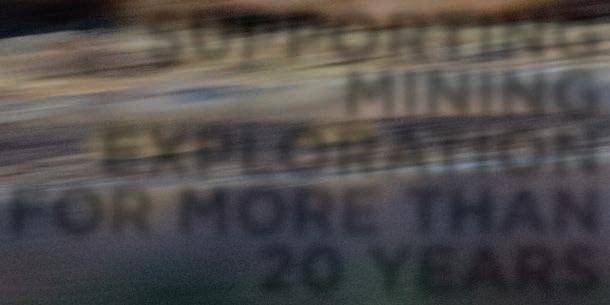

The Ontario mining industry stands at the forefront of a generational opportunity where the pursuit of valuable minerals intertwines with the high-tech and low-carbon demands of the 21st century. The global shift towards renewable energy and electric vehicles magnifies the significance of Ontario's mining potential, a geopolitically secure region with low-carbon energy supply and a long history of mining. The province’s abundance of critical minerals positions it as a key player in the clean technology supply chain, attracting investment interest across the entire supply chain spectrum – from players in the auto industry through to U.S. military. Through its critical minerals strategy released in 2022, Ontario has great ambition to be “the” global supplier of choice for a net-zero future.
Paramount to achieving this ambition is a skilled and diverse workforce. The lack of a robust pipeline of future works has been identified as a key challenge for the major producers in Ontario, who have given the Ontario Mining Association (OMA) a mandate to embark on a reputation-building campaign that dispels myths and misconceptions that are turning young people away from a career in mining.

The mining industry in Ontario faces a stark reality: one in four miners is set to retire and nearly 50% of skilled engineers are reaching retirement age in the next decade, just as the World Bank estimates a nearly 500% increase in supply of critical minerals – by 2050 – to specifically feed the clean energy transition. This juxtaposition has created a perfect storm.
In 2023, the OMA collaborated with the Ontario Labour Market Partnerships (OLMP) to better understand the situation through a “labour market assessment.” The study found that it is difficult to find candidates to fill critical skilled roles because of high retirement rates in senior positions and those with the most demanding requirements. This is further exacerbated by growth in the demand for certified occupations, but the supply of these certified workers has not kept up, and trade qualifications have been stable or declining. The availability and enrolment in mining-related courses at post-secondary institutions are also on the decline. Mining courses exist as a part of post-secondary education but are not available in all regions in the province, and enrollment has been declining, or the courses are no longer offered to the same degree as in the past. Post-secondary programs are also not seen to be catering to the industry’s evolving skill requirements driven by technological innovations, particu-

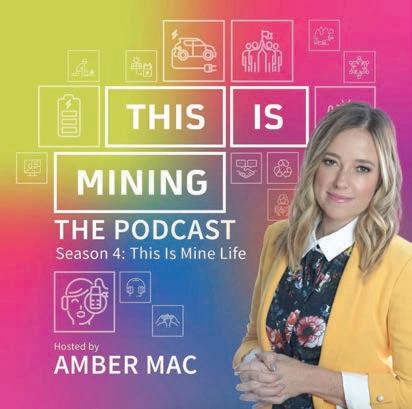
larly the increasing need for technical and automation skills.
The study also identified two challenges we are well-aware of in the industry. The geographic remoteness of mining operations complicates recruitment efforts, and outdated perceptions of mining are a significant impediment. To cultivate a next-generation skilled workforce, it reiterated the tremendous need to share information and have real conversations about modern mining and what it is like to live in the northern areas of our province.

At the OMA, we are active in our efforts to reshape perceptions of mining and help attract a diverse talent pool. Through collective action, public engagement, and a dynamic campaign, we hope to inspire the youth in Ontario today to consider an exciting career in mining. Our “This is Mine Life” campaign leverages our successful “This is Mining” brand, transitioning from a Millennial target audience to Gen Z – the next generation of the workforce. Recognizing that Gen Z is less trusting of traditional media and advertizing, the campaign aims to meet our audience where they live, study, and play. Our campaign has also shifted toward residents in central and northern Ontario, where polling data shows they are more likely to consider a career in mining.
To reach our audience where they live, study, and play inevitably means spending a great deal of time online. We are excited to be working with Edge Factor to produce and distribute “This

is Mine Life” content. Together, we have produced high-impact media that showcases the stories of people working in mining: their careers, the soft skills they need, and the technologies they use. Edge Factor uses the power of cinematic storytelling to take students and job seekers on a journey from “I have no idea what I want to do with my life” to discovering industries, careers, technical education, specialist high skills major and postsecondary programs, soft skills, STEAM (science, technology, engineering, art, and math) , and local opportunities. In collaboration with Mining Matters and Impala Canada, the Edge Factor film crew went behind the scenes at the LDI Mine in northwestern Ontario to film an Industry Tour, and episodes for their various streaming series: Launch Point, Career Profile videos, Skilled Responders, and Geek Out on Tools & Equipment.
President and founder, Jeremy Bout, expresses his enthusiasm about the collaboration, stating, “The team at Edge Factor is excited to partner with the mining industry in Ontario to connect in a new and exciting way that inspires the next generation of mining professionals to find passion in what they do.”
Young people, their families, and their educators are sharing this programming in classrooms, homes, and at events. Students and learners can create an account and complete the online
experiences to learn valuable skills that will move them forward in their career journey. We encourage you to check out the “This is Mine Life” section of the Edge Factor platform:

The first place students find jobs and connect with employers in Canada We are also excited to be partnering with Talent Egg to build the online “hub” of our “This is Mine Life campaign.” TalentEgg. ca is Canada’s most popular job site and online career resource for students and recent graduates. Since 2008, Talent Egg has helped millions of students and recent grads hatch their careers, and worked with hundreds of Canadian employers to successfully attract top talent to join their organizations. The “This Is Mine Life” website on Talent Egg provides users with a range of different resources to support their career journey. It educates users about the purpose of mining, tells real stories about mine life, links users to career opportunities from across OMA members, provides details on scholarships, and more! Please check out our hub on Talent Egg and we welcome all job postings to link up with us on this site.

A first trip underground!
One of the key goals of the “This is Mine Life” campaign is to address negative or false perceptions of mining in Ontario in the minds of the future potential workforce across the province. We know the biggest influencers in their lives are their parents and teachers. With this in mind, we launched the






fourth season of our award winning “This is Mining: The Podcast,” with a renewed focus on mine life.
“This is Mining: The Podcast” explores stories of human transformation connected to Ontario’s mining industry and how mining is tackling the most pressing challenges facing our generation. The podcast takes a deep dive into what mine life means: a life boldly driving our modern world forward, by delivering the metals and minerals that make everything possible. In partnership with Amber Mac, an entrepreneur, bestselling author, blogger, keynote speaker, and podcast/TV/radio host, the podcast offers a fresh perspective on the role of mining in our lives and in our province.
Throughout season four, we focus on the most important resource on Earth: people. In episode one, the modern economist, Todd Hirsh, helps us understand the current labour shortage in Canada and how we can talk to young people about their futures. And Veronica Knott, a young mining engineer, reflects on how she found her passion and home in Canada’s mining industry.

The second episode dives into how the perceptions and misperceptions of mining today reflect the realities on the ground (and underground). Amber Mac chats with Ryan Montpellier, the executive director of the Mining Industry Human Resources Council, and Cara Rockwood, an environmental scientist who is pursuing a career in mining and chal-



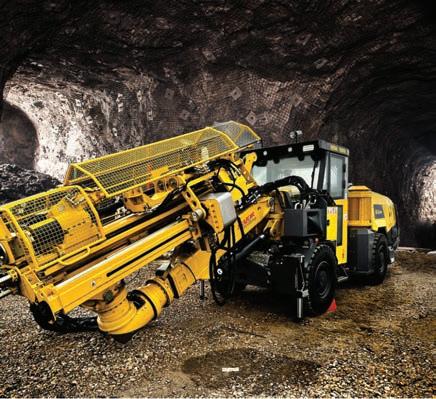

lenging her peers (and even professors!) to think of mining as an environmental field.

The third episode addresses the existing stigma around the skilled trades. Monte McNaughton, the former Minister of Labour, Immigration, Training, and Skills Development in Ontario, discusses how it is important for young people across Ontario to know that careers in the skilled trades are meaningful, well-paying, and in-demand. Kendra Liinamaa, a young millwright working at a nickel mine in Sudbury, reflects on how she personally overcame her own stigma to pursue her own career.

During episode four, Dawn Madahbee Leach, the chair of the National Indigenous Economic Development Board, talks about the power of resource development partnerships and careers as a route to prosperity and reconciliation for Indigenous Peoples. Clyde Moonias, a member of the Neskantaga First Nation, talks about how he is embarking on his career “close to home” as the health, safety and environment coordinator at Wyloo’s Esker site in northern Ontario.

Our final episode of the season sees Amber Mac take her first ever trip underground at a mine in Sudbury. Along this exciting visit underground, Amber connects with Shawn Sauve, a mobile equipment specialist; Alex Mulloy, a carbon specialist; and Christiane Gasteiger, an integrated remote operating centre superintendent – all at Vale Base Metals. NORCAT’s very own tech entrepreneur and mining futurist Don Duval makes a cameo in this episode too!

Last February, the OMA commissioned Ipsos to conduct an online omnibus poll which revealed that 37% of Ontario youth would consider a career in mining. When segmenting the data, there was increased interest in northern Ontario (46%); southwest Ontario (45%), and in central Ontario (38%). And almost two-thirds of youth polled agreed that the government of Ontario should do more to promote the role of mining in the province and the job opportunities that exist in the sector.
We are collaborating with the government and working hard to make sure those 1.1 million youth across our province are aware of the wide variety of occupations available in our sector –occupations that align with young people’s values, given that they are essential to produce low-carbon energy solutions. We are demonstrating how mining in Ontario meets and exceeds the highest environmental standards, how the industry is technologically advanced, and building a legacy a positive net benefit to host communities. An industry where representation matters, and where every voice is heard and respected.
Through the collaborative efforts of industry stakeholders, government support, and the enthusiasm of the next generation, Ontario’s mining sector will overcome the workforce challenges and emerge as a global leader in responsible, innovative, and modern practices. This is not just a campaign; it is a vision for a thriving and dynamic future for mining in Ontario. CMJ Chris Hodgson is president of the Ontario Mining Association (www.oma.on.ca).

The global demand for lithium is projected to reach 1.5 million tonnes of lithium carbonate equivalent (LCE) by 2025 and over three million tonnes by 2030. As the world moves away from fossil fuels, the world needs a stable supply of quality lithium to achieve a low-carbon future, and Canada needs lithium (among other critical minerals) to achieve its netzero target.
In 2022, the government of Ontario announced its first critical minerals strategy, aiming to secure the province’s position as a global leader of responsibly sourced critical minerals, including lithium. The provincial government plan is to work alongside all stakeholders including the federal government, the mining sector, manufacturing Indigenous Peoples, and local communities.
The strategy involves six pillars, or areas of government action, including the following:
i enhancing geoscience information and supporting critical minerals exploration;
ii growing domestic processing and creating resilient supply chains;
iii improving Ontario’s regulatory framework;
iv investing in innovation, research, and development;
v building economic development opportunities with Indigenous partners; and
vi growing labour supply and developing a skilled labour force.
The northern Ontario mining industry is destined to play an important role in the province’s critical minerals strategy as a
supplier of nickel, cobalt, and lithium to southern Ontario’s auto industry.
Several lithium junior miners operate in a different space than precious and base metal exploration companies, and their work led to the emerging premium lithium mineral district located in Ontario being dubbed the “Electric Avenue.” The area contains some of North America’s highest-grade lithium-bearing rocks.
Pegmatites form thick seams called dikes that intrude into other rocks and can measure anywhere from a few centimeters to hundreds of meters. Within Pegmatites is a lithium-bearing mineral known as Spodumene.
The two common methods for mining lithium are brine extraction (predominantly in South America, and it is water-intensive) and hard rock mining of spodumene, with subsequent lithium chemical conversion. Spodumene is a mineral that contains lithium. It is a proven source material for lithium chemicals and subsequent battery production. Hard rock/spodumene is usually extracted via conventional mining techniques. Blocks of mineralized pegmatite are then crushed, and sent to dense media separation and flotation tanks, where ore minerals are separated. Water and gravity are the primary means to separate the spodumene to form a “spodumene concentrate,” which is sent to chemical plants (lithium conversion plants) for conversion to lithium chemicals.
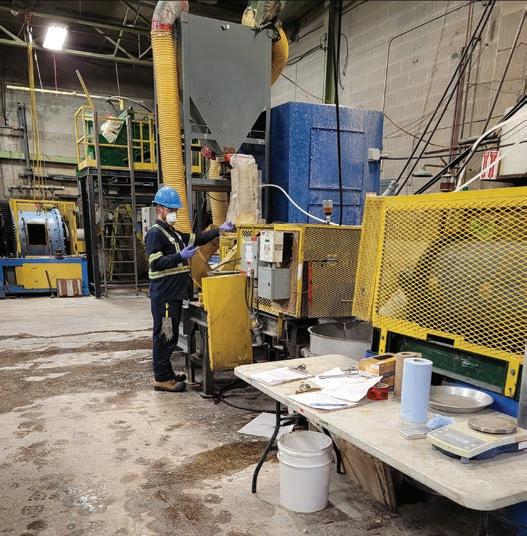
So far, northern Ontario has not seen any mining of lithium, but deposits of lithium bearing pegmatites in the northwest are now being targeted by several exploration companies. As a result, northwestern Ontario is now a rapidly emerging lithium exploration powerhouse, with an ongoing land acquisition fever by several junior mining companies. Ontario could soon emerge as a big player in lithium production, which could help reduce the global lithium market’s volatility, caused by the dependence on current leading suppliers, such as the “lithium triangle” stretching across Bolivia, Argentina, and Chile (recently, Indigenous communities in northern Chile agreed to lift roadblocks that have restricted access to the country’s giant lithium operations), and Australia, China, and Nevada in the U.S.
Sadly, none of the properties in Ontario is currently in the production stage or even close. Table 1 shows two properties (PAK and Georgia Lake) in feasibility and prefeasibility stages, respectively, 10 properties in advanced exploration, nine in exploration, five in preliminary economic assessment (PEA) or scoping, and finally, four prospects: Plaid and Whiteloon Lake, Wintering Lake, Borland, and Forester, with the last two 100owned by Patriot Lithium.
The properties are mostly owned by Canadian companies: 11 out of 17 companies have headquarters in Canada, as shown in Table 2. These Canadian companies own 24 properties in total, with Battery Mineral Resources owning or co-owning eight properties, all of them in advanced exploration. Australiabased miners also have sound presence on the list in Table 2, with three companies: Green Technology Metals, Critical Resources, and Patriot Lithium. The Aussies combined own nine properties at 100%, including only one property in advanced exploration (Wisa Lake, owned by Green Technology Metals). Finally, there are two companies from Belgium and one from South Africa.
Frontier Lithium is an exploration and development mining
Company
Headquarters country
Frontier Lithium Canada
Rock Tech Lithium Canada
Avalon Advanced Materials Canada
Green Technology Metals Australia
Power Metals Canada
Critical Resources Australia
Battery Mineral Resources Canada
Grid Metals Canada
Patriot Lithium Australia
Recharge Resources Canada
International Lithium Canada
Gossan Resources Canada
SCR-Sibelco Belgium
Sibanye-Stillwater South Africa
Sibelco Belgium
Spearmint Resources Canada
Strategic Minerals Europe Canada
> Ontario’s rise as a lithium powerhouse could stabilize current market volatility.
> The province’s push to develop “Electric Avenue” aligns with the global market’s increasing demand for battery metals, essential for electric vehicles (EVs) and renewable energy storage.
company with headquarters and assets in northern Ontario, a tier-one mining jurisdiction. The company’s PAK project represents the largest proven land position in the new, premium lithium mineral district, with a high-grade, large tonnage, and pure lithium resource. Strategically located near the United States border, Frontier is developing the first fully integrated lithium mining-and-processing operation in Ontario with an aim to become a significant supplier of spodumene concentrates and battery-grade lithium hydroxide to the growing electric vehicle and energy storage markets across North America.
Recently, Frontier has commenced a preliminary economic assessment study targeting the manufacturing of battery quality lithium hydroxide in the Great Lakes region to support electric vehicle and battery supply chains in North America. Frontier maintains a tight share structure with management ownership approximately 30% of the company.
Rock Tech is another Canadian cleantech company with a mission to produce lithium chemicals for EV batteries. The company aims to serve automotive customers with high-quality lithium hydroxide made in Germany.
Recently, Rock Tech Lithium announced that it is undertaking a non-brokered offering of approximately 7.7 million units of the company at C$1.30 per unit to raise aggregate gross proceeds of C$10 million ($7.3m). Half of the gross proceeds (C$5 million) are intended to finance the continued exploration and development of Rock Tech’s Georgia Lake lithium project in Ontario, including exploration drilling programs and planned

consolidation of adjacent properties.
Georgia Lake is a key part of Rock Tech’s integrated strategy. The project contains over 40% of the published Mineral Resources in the Thunder Bay District and the newly added Boston Lake mining claims offer another opportunity to further expand. In the last few months, the Georgia Lake project has advanced significantly.
So far, no lithium refineries exist in Canada to convert lithium oxide into an upgraded battery-grade material called lithium hydroxide, companies like Avalon Advanced Materials are working to bridge that gap and become mid-stream processors. The company’s 100%-owned Separation Rapids property is approximately 70 km by road north of Kenora, Ont. The property consists of 19 mineral claims and one mining lease covering a combined area of approximately 4,414 hectares in the Paterson Lake area, Kenora Mining Division, all of which are 100%-owned by Avalon. It is worth noting that Separation Rapids lithium project has the potential to produce high purity lithium compounds for two distinct markets: a specialty mineral product for high strength glass-ceramics and lithium battery materials, notably lithium hydroxide.
The Separation Rapids’ Big Whopper pegmatite deposit is one of the largest “complex-type” lithium-cesium-tantalum (LCT) pegmatite deposits in the world, unusual in its enrichment in the rare, high purity lithium alumino-silicate mineral petalite. Petalite is the preferred lithium mineral feedstock for several high strength glass-ceramic products for technical reasons, including its low level of impurities.
Last June, another junior player, Maverick Capital, announced that it has entered into a definitive mineral property acquisition agreement, pursuant to which it proposes to acquire the Northwind Lake property, a lithium pegmatite explo-
ration project located in the Electric Avenue lithium district, located approximately 10 km north-northwest of the Frontier Lithium PAK lithium deposit in the Red Lake mining division in Ontario.
The Aussies are here!
The recent expansion of Patriot Lithium’s footprint (Patriot Lithium fully owns Gorman and recently added two other prospects: Borland and Forester) and the ongoing development of Frontier Lithium’s PAK project are expected to inspire further investments and exploration within the corridor.
Earlier in Jan. 2024, Patriot Lithium secured rights over an additional 536 km2 in one of the largest and highest-grade lithium deposits in North America: the Electric Avenue. Patriot Lithium’s portfolio in Ontario comprises multiple highly prospective hard rock lithium projects.
Including Patriot’s Gorman project, the Aussie miner will own the largest claim in the “Electric Avenue,” with a regional claim package exceeding 890 km2.
Managing director, Nicholas Vickery, said that adding the Berens and Borland areas positioned Patriot as a major player in “one of the most exciting lithium regions in the world.”
In 2022, Australian Critical Resources secured 1,200 more hectares in Ontario’s “Electric Avenue” to expand its Plaid lithium project.
An aggressive works program is already well underway to identify drilling targets in the region, with pegmatite mineralisation observed across Plaid and Whiteloon Lake projects. The mapped pegmatites follow the same northwest/southeast trend of Frontier Lithium’s PAK, Spark, and Bolt battery mineral deposits.
Finally, another Australia-based junior miner, Green Technology Metals, hopes to begin producing lithium from its 100%-owned Seymour project near Armstrong, 250-km northeast of Thunder Bay, by the first quarter of 2024. The property has an estimated resource of 9.9 million tonnes of lithium oxide grading 1.04%. Other lithium properties in its portfolio include Root, 300-km northwest of Thunder Bay, and Wisa, 100-km east of Fort Frances.
The PAK lithium deposit contains some of North America’s largest and highest-grade lithium-bearing pegmatites in the form of
a rare low-iron spodumene and is the largest in Ontario by size. The deposit is located 175 km north of Red Lake, Ont. The deposit has a strike length of 500 metres and a depth of 300 metres with a true width varying between 10 metres and 125 metres.
The project is 100%-owned by Frontier Lithium, a Sudbury based, publicly listed, junior mining company with the largest land position in the Great Lakes region of northern Ontario known as the Electric Avenue. The Project has significant upside exploration potential.
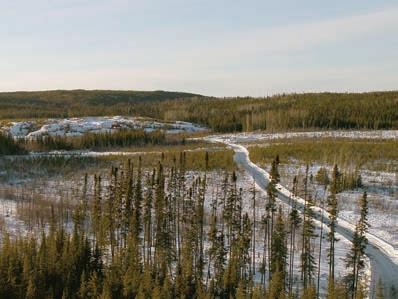
The project encompasses close to 27,000 hectares and covers 65 km of the avenue’s length and remains largely unexplored. Since 2013, Frontier has delineated two premium spodumene-bearing lithium deposits (PAK and Spark), located 2.3 km apart. The project exploration continues through two other spodumene-bearing discoveries: the Bolt pegmatite (located between the PAK and Spark deposits), as well as the Pennock pegmatite (a further 30 km northwest of PAK deposit within the project claims just east of the Manitoba border). A 2023 pre-feasibility study: “National Instrument 43-101 (NI 43-101) Technical Report PFS PAK Lithium Project,” authored by BBA E&C Inc., delivered a 24-year project life, at a post-tax NPV (8%) of US$1.74 billion and internal rate of return of 24.1% as per the press release disseminated on May 31, 2023.
Several operators worked on different targets in the 1950s to discover strategic metals. A comprehensive drilling program was carried out in 1955 and 1956, investigating the spodumene pegmatites after these had been discovered during prospecting work, seeking a potential source of the lithium mineral.
nal return rate of 47.8% and a pre-tax net present value of US$ 223 million for the Georgia Lake project.
According to prefeasibility study, the project has an after-tax net present value of $146 million (at a discount rate of 8%) and an internal rate of return of 36%. The mine would cost $192.2 million to build, with sustaining capital costs of $98.5 million including closure after a nine-year mine life.
In May 2023, Rock Tech announced the expansion of its exploration potential in the Thunder Bay by entering into an option agreement to acquire a 100% undivided interest in the Boston Lake claims. Adding to the company’s Georgia Lake project, these claims will expand Rock Tech’s footprint in a region that is already well-known to the company.
“The Georgia Lake project contains over 50% of the published mineral resources in the Thunder Bay district and the Boston Lake mining claims offer an exciting opportunity to expand our exploration footprint,” said Robert Macdonald, general manager at Rock Tech’s mining entity.
The company asserted that the agreement and the Georgia Lake project demonstrate Rock Tech’s continued growth in the market. To further support this development, CIBC, a longstanding participant in the mining industry, is serving as Rock Tech’s strategic advisor that will help selecting a strategic partner to jointly advance Georgia Lake project by managing the process intended to identify partners for the development and further exploration of the mine project.
> The total resource (measured, indicated, and inferred) of the PAK deposit is 9.3 million tonnes grading 2.06% lithium oxide (Li2O). The deposit remains open at depth and along strike. The inferred resource is 2.8 million tonnes at 2.22% Li2O.
> Spark deposit is estimated to contain 14.4 million indicated tonnes at 1.40% Li2O and 18.1 million inferred tonnes at 1.37% Li2O.
> The Channel sampling in the two other pegmatite occurrences in the area (Bold and Pennock) returned grades of 1.51% and 1.96% Li2O, respectively.
The mine site is Located 160 km northeast of Thunder Bay. Georgia Lake is planned as an open-pit and underground mining project, anchored by indicated mineral resources of 10.6 million tonnes grading 0.88% Li2O and inferred resources of 4.2 million tonnes grading at 1% Li2O.
In November 2022, Rock Tech announced the results of a pre-feasibility study (PFS) completed for its 100% owned Georgia Lake spodumene project located in the Thunder Bay mining district of Ontario. The PFS strengthens previous engineering studies and supports an open pit and underground mine operation and the construction of a 1,000,000 t/y spodumene concentrator. The positive results indicate a pre-tax inter-
Moreover, after reaching a high level of engineering maturity for its Guben Converter in Germany, Rock Tech is now implementing its strategic vision to build several lithium converters in Canada. The company has decided to accelerate the planning for its Canadian converter, aiming for a start of production in 2027. Rock Tech has also relocated its Canadian headquarters to Toronto.
Australian miner, Critical Resources is developing critical metals projects in Canada. The company holds a suite of lithium prospects across Ontario, including Mavis Lake, Graphic Lake, Plaid, and Whiteloon Lake.
The company’s primary objective is the rapid development of its flagship Mavis Lake lithium project. The Mavis Lake Project area includes the primary claims area that was acquired by Critical Resources in January 2023 and new claims that were acquired in late 2023.
This major lithium project is located approximately 19 km east-northeast of Dryden in northwestern Ont., providing a logistics and support base for a low-cost operation during the exploration and development efforts, supported by local resources such as hospitals, airport, and a high quality, clean hydropower produced by Ontario Power Generation and deliv-
ered to the community through a robust distribution network managed by Hydro One Networks.
Critical Resources holds 1,097 individual claims that form a single, contiguous block covering approximately 22,984 hectares of land, with a geological setting, highly prospective for lithium. The First Nations in the area are Wabigoon Lake Ojibway Nation, Eagle Lake First Nation, Naotkamegwanning (Whitefish) Nation, Lac Seul First Nation, and Metis Nation of Ontario.
Critical Resources completed over 19,500 meters of drilling in 2022 that delivered some of the highest lithium assay results reported by any Australian hard-rock lithium company.
Mavis Lake has a mineral resource estimate of 8 million tonnes at 1.07% Li2O and has near-term development potential. Critical Resources has completed over 30,000 metres of drilling at Mavis Lake and continues exploration and drilling to increase the resource base. The company has also commenced technical studies and environmental monitoring programs that will lead to the transition from exploration to development.
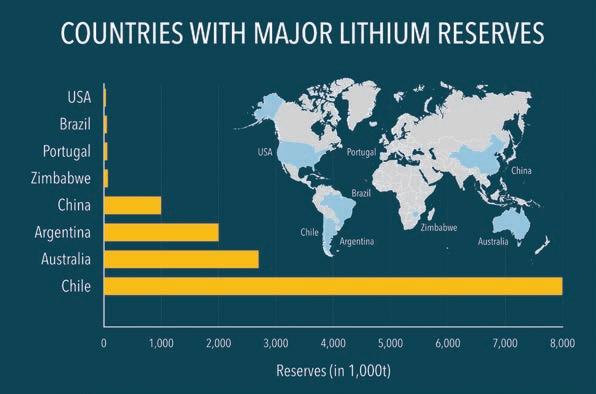
make it a part of a supply chain that supports the North American and European Electric Vehicle industry.
Graphic Lake
Finally, the project has immediate road accessibility to TransCanada Highway 17 and the rail network that stretches across Canada and has links to the northern U.S., providing inbound and outbound logistics routes for major equipment, mining fleet, and other product logistics. Utilizing the deep-water port and shipping lanes from the nearby port of Thunder Bay will help to reach any number of downstream customers and will




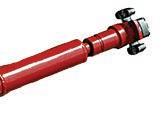







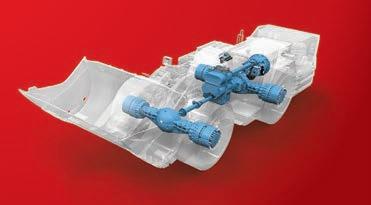
Another project that is 100%-owned by Critical Resources. Located 55 km south-east of Kenora, Ont., Graphic Lake is situated in the Sioux Lookout Domain of the Wabigoon Terrane in north-west Ontario. The property hosts a pegmatite swarm trending NE/SW, over an estimated strike of 5.5 km controlled by the foliation of the metasedimentary host rock. These pegmatites exhibit elevated levels of Rare-Earth-Elements (REE) consistent with LCT pegmatites. LCT pegmatites account for roughly one quarter of all lithium production, most of the tantalum production and all caesium production globally.
Access to the property is favourable along gravel/dirt roads trending east/west from Highway 71. Further infrastructure to site such as electricity is also favourable with powerlines present across the property.
Seymour Lake, Root, and Wisa Lake
Australia-based company Green Technology Metals’ flagship Seymour project is located near the township of Armstrong and approximately 230 km north of the city and port of Thunder Bay. Seymour is rapidly moving from exploration to development to be construction ready by 2024. The project covers the Archean Green Stone belt, highly prospective for LCT pegmatites and hosts a mineral resource of 9.9 Mt at 1.04% Li20.
The project remains largely underexplored with focus on accelerated drilling and development activities on the Aubry deposits in the Southern Seymour tenement area to fast-track the project into production.
In addition to their lithium properties in Quebec, Patriot Lithium’s Gorman project (506 km2) covers 72 multi-cell mining claims for a total area of approximately 320 km2. The Electric Avenue lithium district contains several LCT pegmatites over a total strike length of at least 60 km with potential for additional discoveries along strike to the NW and SE. Patriot’s Gorman project is located approximately 60 to 65 km to the NW of Frontier Lithium’s PAK, Spark, and Bolt LCT pegmatites and about 39 km from Frontier Lithium’s Pennock Lake LCT pegmatite. Additional LCT and rare metals pegmatites, recently identified by Midex Resources occur within 2.5 to 23 km of PAT’s Gorman project. CMJ
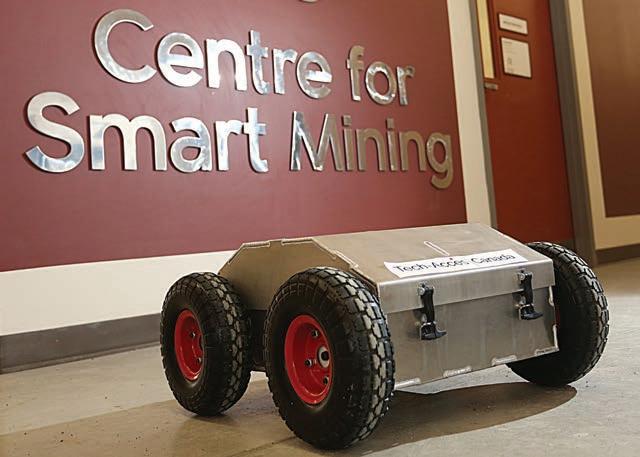
The Centre for Smart Mining (CSM) was established in 2019 as a federally funded research hub focused on helping to solve technology adoption challenges for the mining sector. I have had the pleasure of serving as the centre’s inaugural manager, and since taking the helm, I have had the opportunity to see some incredible things happening in the Canadian mining industry. Since the Canadian Mining Journal is focusing on mining in Ontario for this issue, I thought it would be interesting to look at some of the highlights of technological advancements the CSM has assisted with in mining technology in the province since 2019. Some of the technical themes the CSM noticed were automation and robotics technologies, advanced mobility solutions, and industrial software.
One of the areas that has been growing quickly in Ontario mining is the development and adoption of automated and autonomous systems. Unsurprisingly, some of the interesting projects the CSM has worked on focused on commercializing novel applications of automation technology. One solution the CSM’s mechatronics team worked on involved handling and manipulating drill rods using a robotics platform. Handling exploration drill rods can be laborious and potentially dangerous to workers. CSM student researchers conceived a system using a series of indexing controllers and encoders to locate and grip drill rods and manipulate them into place on the drill rig. The solution saves time and prevents injuries and is now being deployed at some Ontario-based exploration sites to gather feedback data. Open-source tools like Robot Operating
System (ROS) and platforms like Universal Robotics are making projects like this much more possible. In that way, it is very likely that robotic solutions to traditionally manual workflows will become more prevalent in Ontario mining.
The mining sector is one of the most promising industries for implementing advanced mobile equipment solutions. Technologies that contribute to simultaneous localization and mapping (SLAM) are starting to have a big impact on how mobile equipment interacts with the underground environment. Some of the critical technologies that make up systems like this include Lidar to scan the environment, high-powered image processing computers to digest the 3D point clouds and, in advanced systems, machine learning applications for navigation. The CSM has taken on some important projects in this space recently. For example, the CSM is currently engaged in a project that involves developing and testing a driver-assist solution for scoop trams. Much like the above ground solutions, such as lane assist or automated parallel parking car owners have enjoyed for years, this solution provides scoop operators with collision detection, auto-braking, and wayfinding support to help make operating the equipment safer and more productive. These systems should start to roll out in pilot studies in the latter part of 2024.
Software solutions in mining as a category is very broad. It can refer to scheduling, fleet management, asset health management, geological modelling, mine planning, and many other solutions. What is clear, however, is that software solutions that help mining companies organize, plan, and execute more effi-
ciently are becoming more and more numerous. As a corollary, according to recent forecasts, the mining-focused software market is expected to grow from $10 billion in 2023 to nearly $15 billion by 2028. Here at the CSM, we have also seen an increase in the demand for novel software solution development. So much so that in 2022, the centre hired a lead software researcher to manage that segment of our portfolio. Some of the projects this new team have worked on to date focused on software applications that managed and tracked mine material inventory, monitored occupancy and ventilation requirements, analyzed and predicted machine maintenance schedules, and even provided a solution for managing equipment-specific training records. The fact that this team is getting busier each month is evidence that software in mining is continuing to grow as the value of these platforms is proving out in the field.
While the mining industry has long been seen as a late adopter of new technologies, the innovative solutions the CSM has encountered over the last five years is showing that this tendency is starting to fade. Topics like AI (artificial intelligence), robotics, additive manufacturing, and many others are becoming increasingly commonplace in mining and not just in a tokenistic way at conferences but as part of operational decision making. This is further evidenced by the keen interest the tech industry has started to show in mining. Mining is no longer seen as a dead-end for high-tech solutions, but increasingly as a growth sector willing to partner on pilots and demos. For example, if you

would have told me five years ago that Creative Destruction Lab, known for launching some of the most successful tech ventures in Canada, has launched a start-up stream focused on minerals, I would not have believed it. But the fact that they launched one in 2023 shows just how quickly things are changing in the sector, and for the better. Moreover, there have been recent moves from the Ontario government that are aimed at bringing together transformative technologies with critical industrial sectors like mining. The Critical Technology Initiatives (CTI) seeks to further the development, commercialization, and adoption of technology by Ontario companies in key sectors. The funding program is aimed at accelerating the development and deployment of critical technologies such as 5G (including advanced networks), AI, blockchain, cybersecurity, quantum, and robotics. The priority sectors targeted by the program are advanced manufacturing, automotive, life sciences, mining, agriculture, and smart infrastructure. The global critical minerals opportunity coupled with a mining industry willing to adopt technologies more readily and a government that recognizes the importance of investing in adoption means that we are in for a technology boom in Ontario mining. Over the next five years the CSM will be there to lead this transition and to help usher in a new age of technology for the mining sector. CMJ
Steve Gravel is the manager of the Centre for Smart Mining at Cambrian College.
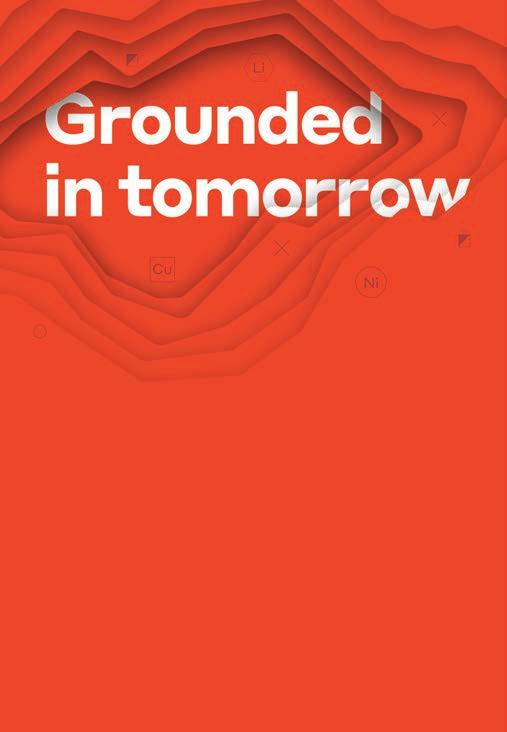
Today’s critical minerals are the green energy of tomorrow. As global mining consultants, we champion sustainable, responsible processes that see beyond profit to support people and the planet.
rough our expertise across the mine life cycle, we meet the needs of now, and guide the industry to where it needs to go next.
wsp.com/mining
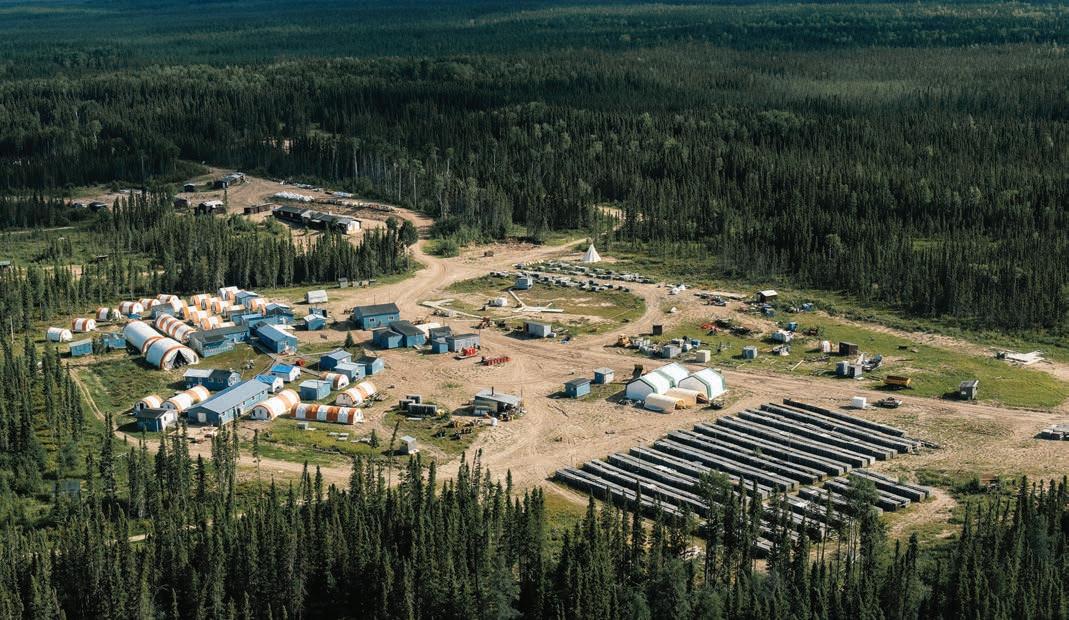
According to the Wildlands League website, a non-profit conservation group, the number of mining claims in the Ring of Fire has increased by over 28% since September 2022. The claims now cover approximately 626,000 hectares, nearly 10 times the size of the city of Toronto.
As of December 2023, there were 33,074 mining claims in the area according to the Ontario ministry of mines. As of September 2023, Juno Corp., a Toronto based mining company is the largest claim holder with more than 17,000 mining claims covering approximately 333,000 hectares. The company holds exploration drilling permits at two sites.
Wyloo, formerly Ring of Fire Metals Ltd., is an Australia-based company that holds more than 10,600 claims. Its Eagle’s Nest project is the most advanced in the area. According to its 2012 feasibility study, the mine will last about 11 years and cost approximately $609 million to build. Reserves are estimated at 11.1 million tonnes grading 1.68% nickel, 0.87% copper, 0.87 g/t platinum, 3.09-grams palladium, and 0.18-gram gold. The company received a $500,000 grant from the Critical Minerals Innovation Fund to test
in mine workings.
George Pirie, minister of mines in Ontario says, “We have very active exploration on the ground, with Wyloo, Juno, and other junior companies. We obviously believe that the potential is unlimited. The mineralized area is just a generational opportunity to explore and develop the nickel, copper, cobalt, and all the other critical minerals that are in that area.”
“Regarding having the mine operational by 2030, we are progressing with our targets which are tied to the road plan. We are working with winter construction and the existing winter roads. Planned road construction is 2027. We have supportive relationships and partnership agreements with Marten Falls and Webequie, and they are completing environmental assessments. Our feasibility study will be completed in 2024,” says Wyloo’s Canada CEO, Kristan Straub.
“The environmental assessments are going very, very well. The consultations are going well. Roads are essential and we are doing everything we can possibly do to meet that 2030 deadline. So, I think everything is on track from that point of
view,” says Pirie.
“As we fully develop these resources, we have got several initiatives to ensure that we execute this strategy. We have got the Innovation Fund, and the Ontario Junior Exploration Program is a critical part of that,” added Pirie.
The Critical Minerals Innovation Fund is a provincial program which supports Ontario-based companies in developing new mining technologies. The fund will provide up to five million dollars, with a maximum of $500,000 for projects that “support the research, development, and commercialization of innovative technologies, techniques, processes, and solutions for critical minerals.”
According to their website, “The Ontario Junior Exploration Program (OJEP) helps junior mining companies finance early exploration projects. These projects help boost mineral exploration, growth, and job creation in the province, particularly in northern and Indigenous communities. Eligible junior mining companies can receive up to $200,000 per project to cover 50% of eligible costs and up to $10,000 to cover 100% of eligible costs per project supporting Indigenous employment and business opportunities.”
The minerals have been valued at approximately $9 billion. Minerals include chromite, copper, zinc, gold, diamonds, nickel, and platinum. The International Energy Agency predicts the demand for nickel will increase by more than 60%, and copper by 40% in the next two decades.
Although chromite, copper, and nickel were discovered in 2007, the area’s remoteness, lack of infrastructure, opposition from some neighbouring First Nations, and bureaucratic red tape have been ongoing issues. The remote location can only be accessed by planes and winter roads (ice roads) only accessible for about two months of the year.
According to Qasim Saddique, a consultant to Marten Falls Nation and road project, and project director and co-lead for the northern road, “The main challenges are the terrain and the remoteness factor of the project. There is no infrastructure for miles, and it will be the first time the region will be connected to the road. It is a huge challenge to conduct baseline studies, and constructability for the future as there is limited access. The terrain presents certain challenges. There are significant water crossings, and muskeg.”
Three permanent roads are planned, connecting two of the communities and proposed mines. The Marten Falls community access road would create a 200-
km north-south permanent route from Marten Falls First Nation to the provincial highway. The Webequie supply road is a proposed 107-km road which would provide year-round access from the community’s airport to the Ring of Fire. The proposed 117 km to 164 km northern road link would connect the mines to the two local roads.
According to the Marten Falls First Nation website, “Better access would allow reduced transportation costs for goods and services; meaning more affordable food, fuel, and other vital supplies and services; enhanced access to emergency, health and social services; increased opportunity for training and jobs for First Nation people and businesses during planning and construction; and increased opportunity for local sustainable economic development.”
“This project has the potential to finally bring economic reconciliation for remote First Nations in Ontario,” Chief Cornelius Wabasse of Webequie First Nation said in a news release. “But these opportunities must also be balanced against the potential environmental and socio-cultural risks associated with building a road,” Chief Cornelius added.
The federal government initiated a regional assessment in 2020 for the Ring of Fire, to examine the potential impacts development. Field study results and the draft environmental assessment will be
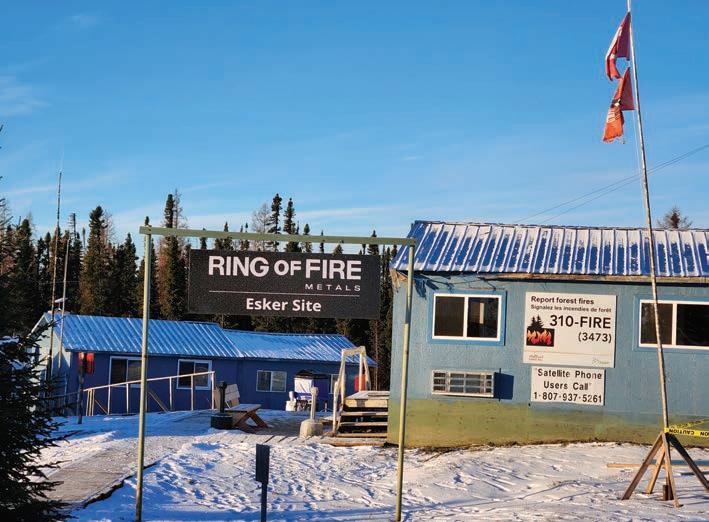
released later this year. The environment assessment and impact assessment are expected to be released in 2025.
According to Gary Wheeler from the ministry of the environment, conservation, and parks, “Ontario’s environmental assessment process is a planning tool that ensures informed decisions are made before shovels are in the ground. Marten Falls First Nation and Webequie First Nation will be expected to explain the purpose and rationale for their proposed road project, fully evaluate the environmental effects and potential mitigation measures, and consult with interested persons, including Indigenous communities, the public, and government agencies”.
Road construction is estimated to take from five to 10 years and will be carried out by the Marten Falls and Webequie First Nations. The roads are estimated to cost approximately two billion dollars. While the Ontario government has carried over a one-billion-dollar commitment made by the former Liberal government, it is unclear where the other half of the money will come from.
There has been ongoing criticism that the process in Canada and Ontario from a mineral discovery to building a mine takes too long.
“The reality is we have got to get a handle on how we develop things in this country. It takes far too long to go through the regulatory process. We must change the way we do things and processes. We are taking seven years to get projects going, and after three years, we are not learning anything new. The impact assessment act takes three years to get done. The act came out in 2019, so how come no one has done it yet?” says Siddique.
“I was elected about 18 months ago and that is why the first thing we did was to develop and pass Bill 71, the Building More Mines Act that got royal assent in May of this year and the regulations are being built out right now. It is just unacceptable. It would take 15 to 17 years to permit a mine,” says Minister Pirie.
Bill 71 introduced amendments to the Mining Act that include changes to closure plans, recovery of minerals frameworks, and decision making. The minister can issue an order to defer one or more elements of a closure plan to prevent the delay of mining projects. Minor site alterations do not require filing a Notice of Material Change. Instead of

being required to improve the land, the condition of the land must be comparable to or better than it was before the recovery activity.
Straub agrees that “permits take too long to issue, Ontario and Canada must address this issue. In Australia, there is a robust social and environmental assessment process, the length of time it takes to get things done and start new mines is very low. Seven to fifteen years is a key challenge if we cannot solve this problem.”
According to the minister of mines, “The economic benefits are already starting to accrue. Within the communities, the province has announced a billion-dollar commitment to develop the broadband and facilities, as well as the transmission corridors. There have already been hundreds of millions of dollars put into the Indigenous communities in the area.”
Straub said, “Wyloo will offer their own employees literacy training, and on the job certifications. Ontario offers Common Core training. There will jobs for both direct labour and contract employees. There will be approximately 300 to 350 employees onsite.”
Common Core programs and courses are offered by NORCAT in surface and underground diamond drilling, basic underground hard rock mine service, underground hard rock mining, surface mining, and first line supervising. NORCAT is the only non-profit skilled labour training and development organization in the world that has an operating mine.
On the Matawa Chiefs website, Marten
Falls First Nation Chief Bruce Achneepineskum said, “The potential for the development of the Ring of Fire region will advance our First Nations sovereignty in our traditional territory and homeland. The agenda must be First Nations-driven and not determined by government, industry, and environmental interests only. We must ensure that the multi-generational impact be maximized to improve the lives of our people.”
There has been ongoing criticism of the lack of adequate consultation of First Nations on mining claims and the road projects. A Matawa Chiefs Council report, published in March 2023, stated, “Although the Matawa Chiefs Council have not provided their free, prior, and informed consent in the area known as the Ring of Fire and do not view it as an adequate consultation; agree to moving forward with drafting a Terms of Reference within a co-led regional impact assessment process, as proposed by the Eabametoong First Nation recommendations and options paper.”
Straub says, “Wyloo will work with the federal government to create a process and engagement with First Nations communities so they can receive information in real time.”
Ten other First Nations in the Treaty 9 territory have launched a lawsuit to change the way resource and land use decisions are made in the region. The lawsuit hopes to include First Nations in discussions with government prior to companies registering mining claims and commencing exploration.
On the Matawa Chief Council’s web-
site, Chief Sol Atlookan of Eabametoong First Nation stated, “The reality is that no decisions can be made yet about the Ring of Fire roads or possible mines; the assessments must give our membership an informed view of the risks and possibilities of those things in due time, and then, when our people have all the right information to make a strong decision.”
Neskantaga, a remote Oji-Cree community located 430 kilometres northeast of Thunder Bay, recently lost its case against the province claiming there is inadequate First Nations consultation under the provincial Environmental Assessment Act.
Judge Julia Shin Doi ruled on Oct. 20, 2023, that the court “has no jurisdiction to rewrite” or upgrade the Act, nor the authority “to make a declaration on the extent” of Ontario’s duty to consult and accommodate First Nations.
Neskantaga First Nation opposed the proposed road to the Ring of Fire and stated their concerns that mining activity will cause significant environment damage.
Chief Wayne Moonis from Neskatanga First Nation stated on the Matawa Chief Council website “Neskantaga First Nation has remained consistent in advocating for the free, prior, informed consent of the Indigenous Rights Holders in our homelands. It is imperative that the unified voice of our elders, men, women, and youth is heard, and our community protocols will be respected. First Nations are waiting for the government of Canada and the province of Ontario to demonstrate the proper respect and for an appropriate government-to-government relationship and dialogue to be established.”
Marten Falls First Nation submitted evidence that 22 First Nations, including Neskantaga, had “extensive notice, opportunities for dialogue and input, support for participation, and options for accommodation.”
“There must be Indigenous inclusion. Until recently, we did not get it right in Canada. The nation wants it done responsibly with community leadership and Indigenous leadership from day one. The local communities are building the road that reaches the mine. We need to share opportunities with neighbouring Indigenous and northern communities, keep communication open and available, and sharing responsibility,” said Siddique. CMJ
Catherine
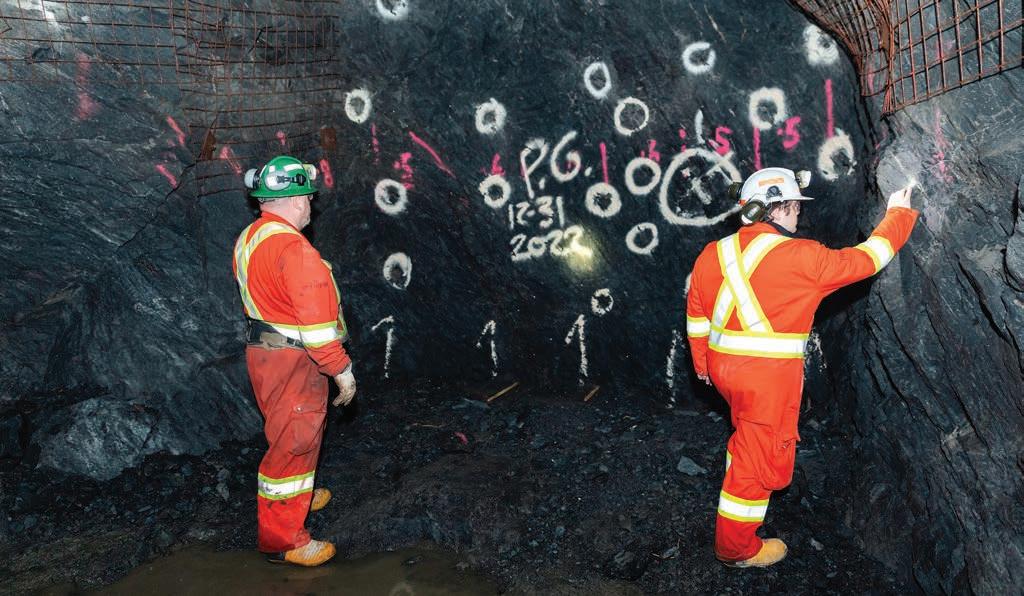
Igrew up in Clonmel, Ireland – a town of 17,000 people. Situated on the banks of the Suir River, it is known for its fertile soil, medieval churches, and hardworking people.
In Clonmel, my father ran a quarry business, producing limestone out of rock. It is a crude type of mining. We had an extraction team and a fleet of trucks. I worked in the quarry from an early age, starting as a “gopher” and slowly taking on more responsibility. There were no shortcuts with my father, you had to earn your stripes.
The quarry business was a good training ground. In the evenings, I used to go out with him collecting money. We would literally knock on doors. A lot of our customers did not pay on time. My father was forceful and persistent. It was an important lesson. When you do the work, provide the service, you deserve to get paid.
Because of this experience, I have never
shied away from conflict. Canadians are not always good at this. It can be uncomfortable to publicly disagree with a colleague, but it is a vital part of leadership.
After high school, I got a technical certificate that enabled me to go traveling. I solved logistical problems in factories. Working in Australia, I met my wife. In my twenties, we returned to Ireland. I went to university as a mature student and studied engineering. During this period, my wife supported me, and we had a kid.
With a fresh engineering degree in my back pocket, I went to Saudi Arabia to work in the oil and gas business. That is where I cut my teeth as a project developer. I was lucky to have smart, generous mentors. They sent me out in the field, doing routine stuff and learning the ropes.
These days, young engineers often try to bypass that step. They want to be managers and leaders. But without the boots-
on-the-ground experience, they get caught out. I always encourage young people to be patient, to be diligent, and to learn from the ground up.
In Saudi Arabia, I discovered that when you ask, “How does that work?”, you will usually get a good answer. Nobody ever says, “I am too busy,” “What a stupid question,” or “Go away.” Approaching challenges with curiosity and humility enabled me to gain knowledge quickly. I learned how to set up a job, how to institute processes, and how to build and motivate a team.
After this experience, I worked all around the world. The Lundin Mining Group sent me to Russia, and then to Sweden, where I lived for four years close to the Artic Circle. We developed an iron ore asset. In the winter, it was dark 23 hours a day. I resided with my wife and children in a village of 600 people.
Working in tandem with the CEO, we

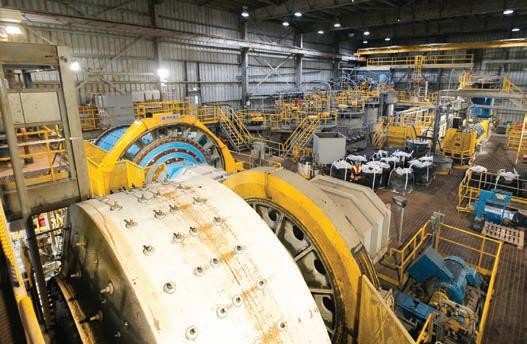
developed the resource, created a mine plan, put together a board of directors, and traveled to London to raise money. I learned how to move an $800 million project from A to Z. The mine was delivered on schedule and on budget.
After this, I became the general manager of projects for Rio Tinto, running a series of expansion brown field projects at Iron Ore Company of Canada. This was an existing operation, so the challenges were different. The workforce was already there. It was about integrating a new project with the new ideas, new structures, and new systems.
I was also the vice-president of operations and capital projects at Eldorado Gold. We took the Lamaque gold project from a preliminary economic assessment (PEA) to commercial operation in 18 months. I also worked on projects in Turkey and Greece.
In Greece, there is a limit to how much innovation you can introduce. You must work with the local engineers, the local consultants, the local permitting board, and the government. You must adapt to them. That is how it works, and that is what we did.
I was also the chief operating officer for Skeena Resources where I was involved in advancing the past producing Eskay Creek Gold project towards a restart.
The creation and management of teams is the most important part of my job. I completed the senior executive program at the London Business School. This gave me an arsenal of techniques in how to motivate and empower team members. It is not about instilling fear. It is about creating “psychological safety,” so that talented people know it is okay to innovate, to make mistakes, and to learn and persevere.
This brings me to West Red Lake Gold (WRLG.V). Our flagship Ontario asset –
the Madsen gold mine – is debt free, fully permitted, and has a brand-new 800+ t/d mill and a tailings and water treatment facility.
At its peak, the asset was valued at over a billion dollars; six times our current market cap. There is smart money heavily invested in the current project: Frank Guistra (10%); Sprott Resource (24%). We purchased this asset for pennies on the dollar when nobody cared about gold.
I am often asked: “How is it possible to purchase a fully permitted gold mine so cheaply?” There is a simple answer: When the mine was briefly in production it was “sub-economic,” which is a fancy way of saying, “It did not make money.” That put off a lot of potential buyers.
After three months’ due diligence, we discovered that the problems with the mine were caused by a compounding series of financial and operational decisions, not the mineral asset itself.
The Madsen land package is 47 km2. That is 11 times bigger than Vancouver’s Stanley Park. With a property this size, and the previous operator’s focus on production infrastructure, the exploration potential at Madsen remains unrealized.
According to an updated NI43-101, the main Madsen deposit has 6.91 million tonnes averaging 7.4 g/t gold for 1.65 million oz. of indicated gold and another 366,200 inferred oz. at 6.3 g/t gold.
The Rowan gold project is 15 km as the crow flies from the Madsen mill. We believe there are synergies between the high-grade resources at Rowan and the Madsen mill.
In September 2023, the published Rowan drill results included an intersection of 8.3 metres at 70.80 g/t Au and 0.5 metres at 1,120.19 g/t Au. Wedge has an additional inferred resource of 431,100 oz. grading 5.7 g/t gold. The September
2023 drill program was intended to expand and upgrade the mineral resource at Wedge.
We have numerous gold-rich satellite targets around the Madsen mine, including Wedge already has an indicated mineral resource of 313,700 oz. at 5.6 g/t gold. Another satellite targets, Russet, has 88,700 indicated tonnes at 6.9 g/t gold, and Fork, which has 123,000 indicated tonnes at 5.3 g/t. We anticipate these satellite deposits will feed the existing Madsen mill, increasing IRR (internal rate of return) and LOM (life-of-mine).
In the mining industry, it is rare to have size and grade working in your favour, but at Madsen, we are seeing both. From what we can see, it is a typical Red Lake system. As we drill deeper into the system, we are getting higher grades.
At US$2,030/oz., gold is flirting with alltime highs in many foreign currencies including that of Canada ($2,700/oz.), Australia ($3,000/oz.), UK (£1,590/oz.) and Europe (€1,850/oz.). We are confident our plans for the Madsen project will demonstrate robust economics at current and lower gold prices.
Working in my father’s quarry as a teenager formed me in a variety of ways that only became apparent later in life. When I am offered a new challenge, my first instinct is to say, “Yes.” That spirit of adventure came from my father, and so did my values and my approach to problem solving. Because of his influence, I am never afraid to put my own ideas forward – and to fight for them.
The idea that I am putting forward now is that West Red Lake Gold has the potential to become a major gold producer. I get up every morning and fight to achieve this objective. CMJ
ShaneWilliams, P.Eng., M.Sc., is the president and CEO of West Red Lake Gold.

As the world shifts to cleaner sources of energy to combat the effects of climate change, it falls on the mining industry to provide the materials for renewable energy infrastructure. The copper that produces wind turbines, the lithium in the batteries that power electric vehicles, and the aluminum used to create solar panels are all products of mining.
Demand for these mined materials is only expected to increase in the coming years. The expectation is that the mining industry will do its part by quickly decarbonizing its own assets and operations. But mining is generally seen as a highrisk and slow-to-change business. So, miners must find a way to grow while changing and bringing in new technologies that allow them to decarbonize. Not a small task, but the goal of achieving net-zero mining operations is the new normal. The time to act is now.
Why are net-zero and decarbonization so important?
The purpose of net-zero emissions is to reduce our greenhouse gas (GHG) contribution to as close to zero as possible. From there, we can use offsets for what cannot be removed. This includes removing all GHG emissions, such as carbon dioxide, methane, nitrous oxide, and fluorinated gas emissions. To quote the United Nations: “To keep global warming
to no more than 1.5°C, as called for in the Paris Agreement, emissions need to be reduced by 45% by 2030 and reach netzero by 2050.”
Decarbonization is a critical strategy in combating climate change and achieving the emissions reductions targets set by the mining companies. It involves a multifaceted approach, including policy changes, technological innovations, and widespread adoption of sustainable practices to reduce humanity’s impact on the environment.
Decarbonization is seen as the “engine” that will pull other aspects of environment, social, and governance (ESG) forward. Why? Because the pathway to achieving decarbonization goals touches on all aspects of ESG. Issues such as water usage, inclusion and diversity, minimizing the impact on the environment, closure and reclamation, disclosure, and transparency are all parts of a decarbonization roadmap.
Key aspects of decarbonizing mining include the following:
> Energy audits: The audits aim to improve the efficiency of energy use in buildings, transportation, material handling, and processing. Audits should lead to steps to reduce energy consumption and associated emissions.
> Electrification: Electrifying aspects of mining, such as transportation, material movement, and heating, to rely on elec-
tricity produced from renewable sources instead of fossil fuels.
> Transition to clean energy: The transition includes shifting from fossil fuels like coal, oil, and natural gas to cleaner and renewable energy sources. These include solar, wind, hydroelectric, small nuclear reactors, and geothermal power. This reduces CO2 emissions from power generation. We are seeing more companies install and use their own renewable energy sources every day, like BHP’s solar project in western Australia.
> Carbon capture, utilization, and storage (CCUS): When we cannot avoid carbon emissions, we turn to technologies that capture CO2 emissions from industrial processes and power plants. Then, it can be stored or repurposed. That way, the emissions are not released into the atmosphere.
> Natural capital and nature-based solutions (NbS): Natural capital is the planet’s stocks of water, land, air, and renewable and non-renewable resources. NbS can help provide sustainable management and use natural features and processes to tackle climate change. One way we see this in the mining industry is with mine closure and water management. When closing a mine, the best option might be a nature-based stream restoration.
> Circular economy: Encouraging recycling and reusing materials to cut emis-
sions associated with the production and disposal of goods. Whether we are upcycling, recycling, or reusing, there are many ways we can reconsider “waste” in the mining industry. We are also seeing encouraging results from the growing field of reprocessing tailings.
> Behavioral changes: Promoting changes in behavior and lifestyle, such as increased use of public transportation and reducing waste to lower personal carbon footprints. As consumers, we have a moral obligation to understand where and how our products are sourced. Some major companies, like Telsa and Apple, have invested in sourcing low-carbon metals for use in their products. We will likely see more low-carbon materials as consumer demand changes.
Scope 1, 2, and 3 emissions in mining
This is how we categorize the different kinds of carbon emissions a mining company creates in its own operations and in its wider value chain. The term first appeared in the Green House Gas Protocol of 2001, and today, the scopes are the basis for reporting GHG emissions. Scope 1 emissions refer to direct GHG emissions. In mining, scope 1 emissions
typically come from mining operations and include the following:
> On-site fuel combustion: Emissions from the combustion of fossil fuels within the mining site, such as diesel and gasoline used in mobile equipment, mobile pumps, mobile light plants, and vehicles.
> Blasting emissions: Emissions from explosives in mining, which release gases and particulate matter into the atmosphere.
> Process emissions: Emissions from chemical reactions or processes that release GHGs, such as methane emissions from coal mining or smelting processes.
Mining companies have direct control over scope 1 emissions and can implement measures to reduce them. These include improving equipment efficiency, switching to cleaner fuels, or capturing and reducing vented gases.
Scope 2 emissions are indirect emissions associated with generating the energy that a mining site uses. These emissions occur at the facilities that produce the electricity or heat used by the mining operation. Common sources of scope 2 emissions in mining include
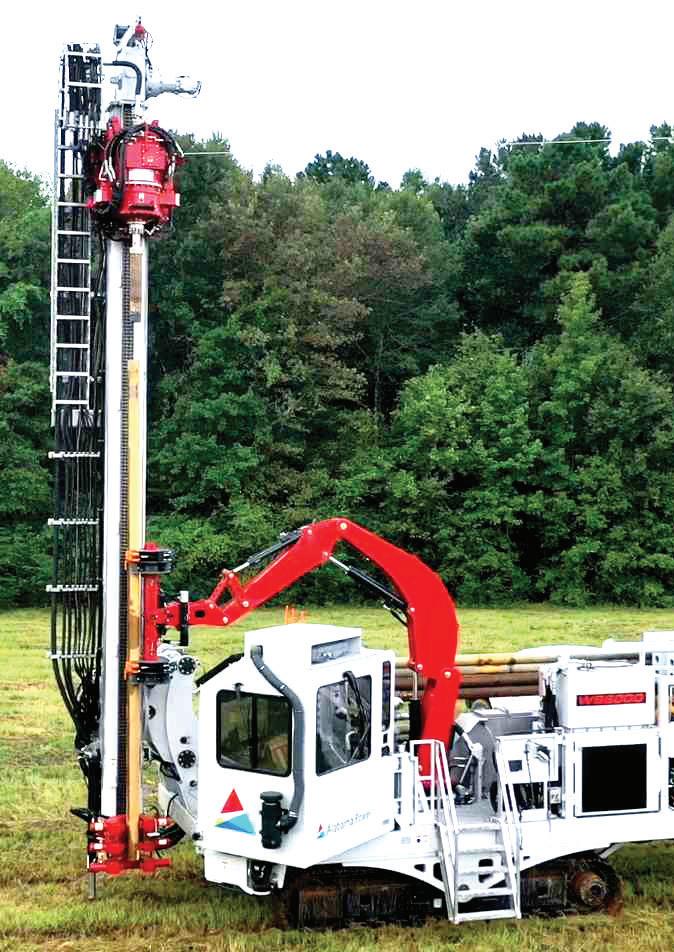

> Electricity consumption: Emissions associated with the electricity used for lighting, ventilation, and various processes within the mining facility.
Mining companies can reduce scope 2 emissions by sourcing electricity from cleaner and more sustainable sources, such as renewable energy. They can also reduce scope 2 emissions by reducing their overall energy consumption.
Scope 3 emissions are a broader category of indirect emissions. In any industry, scope 3 emissions can be the hardest to measure. In mining, they encompass a wide range of activities and emissions sources that are indirectly related to the mining operation but occur outside of its direct control. These emissions include the following:
> Upstream emissions: Emissions associated with the extraction, production, and transportation of raw materials, equipment, and fuels used in mining operations. This can include emissions from the mining company’s supply chain. For example, scope 3 upstream emissions for an open pit mine would be the emissions produced when manufactur-
ing or transporting a haul truck that is used at the site.
> Downstream emissions: Emissions resulting from the processing, use, and disposal of mined products. For instance, a coal mine site’s scope 3 emissions would come from the combustion of coal in power plants. As you might imagine, many mining companies have large scope 3 downstream emissions and these can be challenging to reduce.



> Transportation emissions: Emissions from the transportation of mined products to market, including emissions from shipping, rail transport, and road transport.
> Land use changes: Emissions from deforestation, habitat destruction, or changes in land use because of mining activities.
Addressing scope 3 emissions often involves collaboration with suppliers, cus-

tomers, and other stakeholders across the mining value chain. Reducing scope 3 emissions is essential for a comprehensive approach to sustainability in mining and reducing the industry’s carbon footprint.



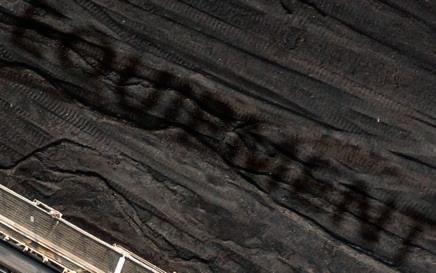

Most major mining companies have set net-zero emissions targets for both scopes 1 and 2 emissions. These targets are critical to mining’s continued role in the energy transition. However, scope 3 emissions dwarf those of scopes 1 and 2 emissions for most miners. So, it is imperative that the mining industry works with upstream and downstream partners to reduce GHGs across the value chain.







Recently (in Sept. 2023), the International Council on Mining and Metals (ICMM) published guidance to improve the mining industry’s disclosure of scope 3 emissions. The guidance sets clear parameters for calculating emissions across the 15 categories of scope 3 emissions in the GHG Protocol.
“Climate change is the key challenge of our generation. ICMM’s scope 3 emissions accounting and reporting guidance will help to improve the understanding of mining and metals companies’ scope 3 emissions profiles, as well as provide opportunities to accelerate emissions reduction,” said Jakob Stausholm, chief executive, Rio Tinto, and chair of the ICMM Council’s Climate Change Advisory Group.
This is an important step for the mining industry to ensure that it is a responsible partner in the energy transition and that it is doing its part for a net-zero future.
We cannot wait to decarbonize


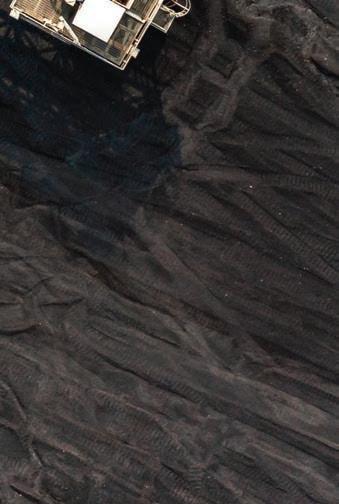




The impacts of climate change that we have seen around the globe are a glaring signal that the time for incremental changes is over. It is clear that immediate and drastic action towards a net-zero future is necessary, and it is equally clear that this future is not possible without mining.
The silver lining? There is an opportunity for the mining industry to be a leader in innovation and emissions reductions. Every day, we are seeing new strides in mining operations, providing more opportunities for mine owners to help the world meet its climate goals. It is time to act now, and we cannot wait to decarbonize mining. CMJ
Sat Pandher is a senior mining engineer and decarbonization lead at Stantec.

The prevalence of ecological concerns, impending deadlines for global climate commitments, and the increased need for mines to source materials to support the skyrocketing electric vehicle industry, position 2024 as a transformative time for the mining industry. Yet, even in an evolving mining landscape, the bottom line remains the same: safe mines are profitable mines.
Mining is one of Canada’s oldest and most profitable industries, contributing billions yearly to the national GDP. Yet simultaneously, it remains one of the most dangerous for the human capital that keeps the industry functioning. Mines, as workplaces, hold reputations for demanding physical labour and increased risk of catastrophic accidents, such as floods and chemical leaks, compared to any other industry. Maintaining employee safety in mines requires continuous implementation of new technol-
ogies to support workers’ physical and psychological safety. In 2024, mines must look to technological innovation as a way to support employees on the path toward zero-harm mining in Canada.
The state of safety in Canadian mines
a. Physical safety
An increased commitment to physical safety in mining in Canada has been steadfastly effective over the past decade. According to the most recent report from the Mining Association of Canada, both fatal injuries and non-fatal injuries have steadily fallen to just four and 161.6 injuries per 10,000 employees, respectively. However, the goal remains set at a zeroharm mining industry in Canada.
duce billions of dollars in annual revenue, yet are governed slightly differently based on provincial jurisdictional requirements. Because of this, occupational safety issues differ slightly, and required resolutions and improvements may take different forms accordingly.
In Ontario, exposures remain the most common lost-time injury incidents, accounting for 44% of incidents that required employees to take one or more days off work in 2022. These prominent incidents are followed by bodily reaction and exertion incidents at 27%, contact with equipment or objects at 13%, falls at 7%, and other adjacently related incidents at 8%. From these incidents, the top occupational ailments affecting Canadian miners include hearing loss, respiratory diseases, and circulatory diseases.
In British Columbia, the most common incident report in the 2022/2023 fiscal
Four provinces in Canada account for the majority of mineral production for the entire country through their mines. Ontario, British Columbia, Quebec, and Newfoundland and Labrador each pro- CONTINUED ON PAGE 36
year was related to out-of-control equipment, followed by incidents involving explosives and unexpected outbreaks of fires. The injury rates in quarry mines remain consistently higher in comparison to coal, underground, and metal mines in the province.
Despite down-ticking trends that show positive improvements in mine worker safety standards, it was not that long ago that Canadian news outlets were covering stories of missing miners in Quebec and, more recently, the sudden death of a miner in Labrador.
With each incident that comes to light, the local occupational health and safety office takes part in the investigation that follows. However, these reactive measures do little to protect future miners from the same vulnerabilities that the injured fell victim to. Mining companies must use the insights and hard lessons learned from mining accidents to embrace innovation and technological advancements and apply them to safety gaps in mines.
While physical safety is often regarded as the paramount concern of mining corporations and regulatory bodies, psychological safety is more susceptible to being overlooked. Psychological safety in mines is interdependent on multiple environmental, psychosocial, and systematic factors that create unique experiences for each employee. Employees’ mental well-being can directly affect their ability to complete the physical demands of a job and know when a task is potentially dangerous. In psychologically unsafe environments, employees are more likely to experience demoralization, threats, and disengagement from the tasks at hand, issues that can be life-threatening in a mine.
Constant updating of safety mechanisms in mines is necessary for companies to keep workers safe and avoid the hefty fines and reputation damage associated with failing to live up to this duty.
Implementing mechanisms such as cooling vests, portable gas detectors, and thermal imaging cameras are newer technologies that help miners navigate formidable daily conditions. In an effort to improve safety before workers enter the mine for the day, some sites are implementing breathalyzers and toxicol-
ogy screening to ensure employees are in adequate physical and cognitive health to work that day
The Mining Association of Canada regularly updates its protocol to ensure that there is a high national standard for safety in Canadian mines. Canada is fortunate to have a robust culture of protecting the health and safety of miners and the communities they work in. However, as suggested, there is always room for improvement.
a. On-site technology
Looking forward, the focus will be on removing humans from the frontlines of the most dangerous tasks in mining and allowing machinery to fill these functions. Teleoperating and drone monitoring will be crucial for keeping miners at a safe distance from potentially harmful tasks. Advancements in artificial intelligence (AI) are allowing the exploration and discovery of mines through autonomous robots, removing human miners from high-risk jobs.
Advancements in radiofrequency technology are also ensuring individual miners are accurately tracked, alerted when machines or other miners are nearby, and can monitor potential slopes within the mines.
Extensive training goes into becoming a miner in Canada, which can also be enhanced with new technology. Virtual reality (VR) is creating the opportunity to simulate the underground experience without posing a risk to novice miners. With continual advancements in interactive software, miners trained in VR simulators are better equipped and more confident when facing the unsettling environment of a mine for the first time.
b. HR technology
Miners sit on the frontline of danger, and upper management is not always in tune with potentially harmful behaviour or assignments that are taking place in the mines. Therefore, miners will be the first to suspect danger or risk inside the mines. However, they may not always feel comfortable bringing this to the attention of supervisors or management.
Technology, such as gives employees an outlet to address concerns related to workplace safety. Through either a 24/7 hotline number or an online intake form,
employees are able to securely report wrongdoing in the workplace that is posing a potential risk to themselves or other employees. Having these outlets on-site as well as remotely available will help ensure employees feel safe to make reports when needed. Similarly, employers must ensure that no employee is retaliated against for making a report. By imbedding anti-retaliation into workplace policy and encouraging employees through comprehensive training on the tools, anonymous reporting mechanisms can be an effective vehicle for improving safety in mines.
Training all employees on best practices for using new technology and equipment will help develop a shared responsibility for holding each other accountable to create a safe and respectful workplace. As of June 2023, the Mining Association of Canada’s TSM Safe, Healthy, and Respectful Workplaces Protocol calls on employers to update processes and programs to support psychological safety, effectively train employees, and set continual improvement targets for physical safety in mines.
With this focus on preventative technologies, there is light at the end of the tunnel for a zero-harm workplace in the Canadian mining industry. With new personal protective equipment and technological advancements of machinery, paramount physical risks in mining are being reduced. Additionally, the “see something, say something” mentality in mining is growing to support the psychological safety of miners, and HR technology, such as whistleblower reporting mechanisms, further supports this. However, it is up to the employer to ensure complaints are taken seriously, employees are not retaliated against for speaking up, and anonymity is maintained in order for everyone to feel safe making a report. The path forward requires mining companies to embrace technology that can proactively address common issues in the high-stakes industry. CMJ
Shannon Walker is the founder of WhistleBlower Security Inc. (WBS) and executive vice-president of strategy at Case IQ. Shannon frequently speaks around the world on whistleblowing, ethics, corporate culture, and diversity.

Over a decade ago, I began my examination of leadership styles and profitability, as it relates to the cost to produce one pound of copper in Arizona. The examination of this correlation is important to study, as it could help to improve the Arizona copper mining industry’s ability to predict organizational outcomes based on the leadership style used. Since my original research, I have shown a connection between the leadership style and the contribution to the profitability of a copper mining operation. A quantitative methodology was used to explore the research for the following question: What is the correlation between transformational leadership and the profitability of Arizona copper mining companies?
I grew up in and around and have worked in the copper mining business. The leadership of mining companies has always been an area of interest to me. In my early years as the son of a miner, our family was dependent on the mining company’s top management team (TMT) for its welfare. We observed the cyclic nature of how the industry operated, and we knew the effects firsthand. After entering the workforce, how the TMT affected the company and the industry became more apparent.
Like most mined commodities, Arizona copper follows a boom or bust cycle, and this creates a similar effect on the communities that depend on it. The dependence of the copper mining industry on each individual company’s TMT leaves the residents vulnerable to the changes in the team’s leadership style. Small changes in the TMT can have large effects in these communities. A microcosm of this can be seen by reviewing the history of copper mining in Arizona.
In the past, copper mining in little towns like Clifton, AZ., was the bedrock of life. Company-owned department stores and other businesses gave credit to miners until payday, families played at the company picnic, and burly miners answered nicknames like Tiny and Sparky. During the 20th century, Arizona mines began to close because of the poor decisions made by leaders. As a result of bad leadership, some of the richest depos-
its became uneconomical. Communities located in the “copper triangle,” which extends from the Mexican border to just south of Phoenix, crumbled because of the inability to sustain profits. Businesses closed as revenue dried up, and the buildings housing these businesses stood vacant or burned down. Families were forced to move away to find employment and environmentalists descended on these communities and found health risks associated with the waste piles and tailings ponds.
In this region, like many others, total earnings and employment are dependent on the mining companies. This story is repeated across most mining communities. The loss of mining in these areas results in increased poverty and dependence on welfare programs. The heavy dependence on the copper mining industry leaves these communities susceptible to the fortunes of the industry. This review supports the need to focus on the TMT within the organizations and the copper mining industry with the thought of alleviating some of the consequences of this boom or bust way of doing business.
With the recent advances in technology, copper is becoming easier to extract and at much lower concentrations. Copper prices have remained healthy for a long time, and this has attracted multinational companies who promise to invest billions of dollars into local communities, providing thousands of new jobs. While some locals are encouraged, others are wary. Those who are wary fear the resurgence will hurt their chances to redefine themselves as destinations for tourism, art, and outdoor recreation. Residents who grew up playing in the shadows of smelter stacks bellowing sulfur smoke and tailings ponds now consider the contamination of the air, water, and soil before welcoming the multinational miners. They fear the boom-and-bust cycles and the inevitable mine closures when the next challenging time arrives. Most of these folks resent the non-U.S. based ownership of these once-local operations and the lack of community commitment inherent to this leadership.
CONTINUED ON PAGE 38
My predecessors would not recognize today’s mine plans. Designed in reverse, companies must develop a reclamation plan before they can break ground. The mining plan is no longer solely based on technical and economic models, but it also incorporates the wider concerns of society. The leadership style of the TMTs must be exactly right to maintain a company’s competitiveness.
TMTs are the individuals of a company’s management who have day-to-day corporate management responsibility. These team members have executive powers granted to them by the board of directors or shareholders. There is usually a higher level of responsibility conferred on the board of directors or shareholders to provide strategic direction to the TMT and not the day-to-day activities. The characteristics of the team provide more insight than those of a single executive. The target population for this study focused on the TMTs of Arizona’s copper mining operations C-level officers and operating unit teams-based on their cost per pound.
Prior to this study, transformational leadership (TFL) was thought to be lacking in the mining industry. Based on review and understanding of the literature, as well as personal and professional experience within the Arizona mining industry, the study found that the leaders are “more transactional than the norm.” Based on this, it was my belief that the transactional leadership (TAL) style most widely used was contingent reward. The research revealed that the most prevalently used leadership style in the Arizona mining industry was active management-by-exception. Management by exception is where the leader sets out rules and regulations and key performance indicators (KPIs; numbers) and manages by waiting for someone to step outside of these parameters and then acts. This is sometimes referred to as the “Gotcha” leader. Since my original research, I have found that this leadership style is prevalent throughout the entire mining industry. To be competitive in the ever-changing Arizona copper mining industry, leadership is vital at every level of the organization. It needs to be disseminated into traditional areas to best affect change, and active management by exception is located directly in the midpoint of the full-range model, signaling the nature of this style, not particularly inactive or active and not particularly ineffective or effective.
Many leadership theorists have discovered that ineffective and inactive leadership in an organization appears to be the chief reason for diminishing the organization’s productivity and the downward trending of corporations. To transform the Arizona copper mining industry from boom or bust, the leaders of the industry need to embrace a change from the leadership style indicated in this study, TAL (active management by exception) to a more TFL style.
The study did find that there was a positive correlation between the cost per pound in Arizona copper mining companies and TFL methods. While not the focus of the research, a multifactor leadership questionnaire (MLQ) measured the participant’s TAL traits. The industry is steeped in tradition and the use of TAL theory, which is the most-often used management theory in Arizona’s copper mining organizations.
TAL theory is rooted in transactions between the organization and the employee, or between the leaders and followers running a business that uses reward and punishment to get things done.
The advantages of this model are that it drives desired performance if the employee is motivated by rewards and the leaders’ promises are kept. It also produces the preferred outcomes of the short term if the TMT can make decisions and possesses a persuasive personality. The disadvantage of this style is that assertive leaders will thrive in this environment, they will create followers without the ability to think, and they will stunt the growth of future leaders. When employees are conditioned to do what they are told and only that, they will stop thinking for themselves. Original thinking is lost in this system, creating an unimaginative but obedient workforce. Future leaders will be difficult to identify in the rank and file. Furthermore, the TAL model creates a stressful work environment. Productivity within the system is maintained in the short term, but innovation is hard to find, and competitive advantage is diminished.
The organization using the TAL model will build a workforce of compliant followers but fewer innovators. They will develop overbearing leaders who rarely leave behind protégés capable of sustaining the organization by inspiring and leading people. To produce copper at a profitable cost, even in a turbulent economic environment, the TMTs within the industry need to understand how leadership influences profitability. Strong and innovative organizations are at the heart of this and, using TFL styles, the industry can reduce the effect of fluctuating copper prices on its organization and the surrounding communities.
By virtue of their formal role in the mining industry, top leaders are responsible for empowering their followers to set goals and motivating them toward achieving them. Transformational leaders are goaled with “transforming” the organization and people in the literal sense. Achieving the change required by the mining industry will require leaders with initiative, patience, courage, persistence, vision, and faith to be a transformational leader.
Many researchers found that “transformational leaders provide the basis for creating organizations that are extremely effective in terms of any criterion of performance or profit.” These researchers reported that “executive leadership was considered the single most important factor separating the top 100 American companies from their contemporaries.” However, leadership is still not viewed by the Arizona copper mining industry as the master key to success. Once the organization’s employees have taken responsibility and ownership for the need to change, the organization will be guaranteed to remain competitive in today’s marketplace.
This article is one of two articles. To complete my doctoral work, I elected to study the senior leadership of the top six mining companies in Arizona. My hypothesis was that the more successful mining companies were led by transformational not transactional leaders. The second article of this research will be published in a future issue of the Canadian Mining Journal CMJ
Dr. Nathan Wright is the founder and president of Transformational Performance Solutions LLC. With 40 years of field experience and a doctorate in Organization, Development, and Leadership Style, Nathan has a proven record of transforming organizations into revenue-producing powerhouses. He also helps corporate leaders develop their teams into top-caliber professionals, capable of effectively navigating and utilizing the tools available to them.
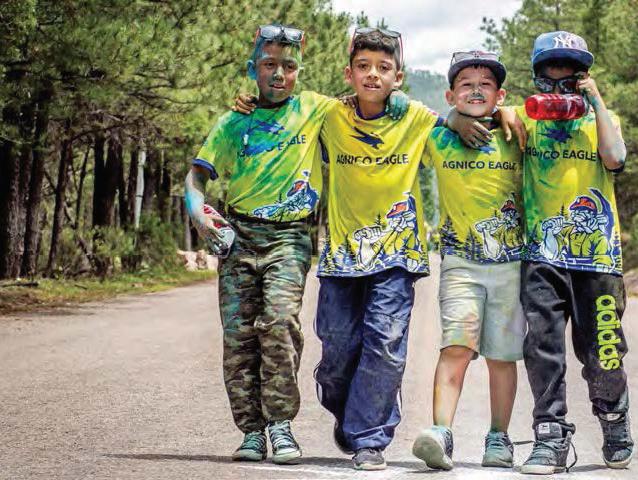

When you work in a community, you become part of a community, and when you do, you can play a part in making a difference.
Explore our opportunities:


Much ink has been spilled by investors, politicians, and mining executives regarding the future of mining in Canada, and many are optimistic. The green energy transition, if it materializes, will rely on Canada’s abundance of critical minerals, representing a once in a generation opportunity for the industry and the country.
Unfortunately for Canada and its miners, chronic talent shortages represent a major roadblock in the path to production targets, and indeed, prosperity. It is no secret that the Canadian mining industry had been dealing with a persistent shortage of labour, and the future does not look bright. Over 20% of the Canadian mining workforce is over the age of 55 and getting set to retire. At the same time, enrollment in mining programs has dropped nation-wide by 10% with some schools closing their mining programs entirely. If these trends continue (and there is no evidence to suggest they will not), the Mining Industry Human Resources Council estimates that 80,000 mining jobs will go unfilled by 2030.
To understand what these statistics mean for mining organizations and what miners are doing to adapt, Calross Consulting, a recruitment and consulting firm that concentrates on the mining industry, published their recent labour report, following numerous interviews with mining executives and industry HR leaders. The report suggests virtually all mining organizations are being impacted, and numerous initiatives are being developed to mitigate these deep-rooted challenges.
Unsurprisingly, the most blatant impacts of such widespread labour shortages are being observed in production. While most Canadian miners have been able to avoid complete work stoppages, some operations conceded that their workforces are spread so thin that above-average absenteeism, has in the most
drastic cases, interrupted production.
Happily, most executives reported that they have been able to avoid full operational shutdowns. Even still, 71% of mining executives say talent shortages are holding back production goals.
The talent crunch, combined with growing cost of living concerns, has meant that for many mining companies salary negotiations have become increasingly drawn out and complex. For unionized mines, HR leaders suggest there is an elevated risk of strikes, and organized labour is more willing than in recent years to engage in work stoppages to ensure their demands are met.
Canadian mining leaders also note that workplace loyalty is at an all-time low with many employees willing to change employers given only marginal financial incentives.
Beyond salary and renumeration, Mining executives admit that workplace demands are changing and increasingly employees are calling for better work-life balance. Increased vacation time and PTO have become common negotiation levers, and there is a growing preference for work schedules that accommodate more uninterrupted time at home.
For many, work-from-home arrangements have been considered incompatible with on-site mining operations. However, as hybrid working models become normalized across the country, there is growing demand from mine workers for increased flexibility regarding where their work is done. Workers are now more likely to ask for safety training, administrative work, and other duties that do not necessarily require to be onsite, to be conducted virtually.
Mental health considerations have also become more prominent for employees. Working in isolated areas away from loved ones means that mining workers may be particularly susceptible to mental health challenges. Many organizations report that there is a growing willingness for mine workers to ask for help

and more utilization of mental health support programs and counselling.
Mining companies are also reporting that among young employees and jobseekers, ESG consideration are growing in importance. Hiring managers have noted that candidates are more likely to research a perspective employers’ ESG record prior to applying for open roles, and rhetoric is being backed up by concrete action, with some candidates turning down jobs with organizations that do not meet their ESG standards.
All interviewees report that their organizations have been adapting their workforce attraction and retention strategies to accommodate the stark labour reality.
Regarding recruitment, the use of third-party recruitment agencies has become widespread, and headhunting is considered increasingly standard in the industry. There is also a growing willingness to recruit from outside of the mining industry to fill labour gaps, with more openness to hire workers without mining specific experience, particularly in administrative roles such as finance and human resources. This diversity of experience is increasingly being viewed as a positive.
For more technical and mining-specific roles, many hiring managers remain reluctant to recruit from outside of the industry but concede that in some cases there is no alternative. To accommodate new employees without mining experience, some organizations have begun developing internal upskilling programs.
Formalized training programs have also become more widespread, with many organizations looking to local communities and experimenting with programs to attract, train, and hire from areas close to mine sites.
To retain existing employees, many organizations have
begun investing in cross-training programs to ensure their existing workforce can redeployed and to fill in skills gaps that are being seen as increasingly inevitable due to chronic labour shortages.
Large scale retirements have also forced workforce planners to innovate. As senior employees begin looking to retire, loss of talent and expertise is a growing concern. Savvy mining organizations have begun developing mentor programs to pair senior employees with more junior staff to better facilitate the transition of mining expertise.
Diversity and inclusion have long been important to industry leaders. For many mining organizations, a diverse workforce was seen as only “nice to have.” But as the impacts of skills shortages begin to have concrete impacts, there is a widespread understanding amongst HR experts that a robust workforce will require accessing talent from a diverse range of ages, backgrounds, and genders.
While many mining organizations admit that though there is much that can be done right now to mitigate skills gaps, numerous mining leaders have begun rethinking entirely what the workforce of tomorrow will look like. As technology improves and labour is harder to find, many organizations have begun looking at automation to mitigate talent shortages.
Moreover, with advancements in how mining is done and a changing workforce, mining organizations have begun prioritizing different skill sets. Unsurprisingly, a comfort with technology is more important than ever. Regarding soft skills, many leaders recognize that the realities of mining will require a workforce that is capable of being re-skilled throughout their career. As mining practises change, adaptability is increasingly being valued amongst new hires.
Leadership and communication skills are also in high demand, as many miners understand that strong managerial skills can improve workforce engagement and reduce attrition by listening and reacting to the needs of employees.
While all mining organizations have begun putting in place initiatives to combat skills shortages, mining leaders agree that more must be done.
A full rebrand of the industry is considered a top priority. The perception of mining as a dirty industry persists and in a recent survey, 70% of respondents between the ages of 15 and 30 said they “definitely would not or probably would not work in mining.” The highest among all industries surveyed. As one executive put it “kids want to work at Google, not in a mine.”
The growing consensus in the industry is that work needs to be done to reverse this perception, and to introduce mining as a career option to young people who are often unaware of the array of opportunities within the industry. Experts agree that efforts should be focused on students before they reach post-secondary, as career choices are already entrenched by the time students graduate high school.
Mining organizations will also need to lean into what young people look for in a career. For example, 54% of Gen-Z and millennials would be willing relocate for a job with an employer that has an ESG strategy. Miners will need to double down on their ESG efforts and improve their communication strategies to market these initiatives to young people.
While effort has been made to increase diversity within the workforce, mining leaders agree that they need to bolster efforts, as drawing on underrepresented communities will be critical to ensure a robust workforce.
HR leaders agree that mining continues to be perceived as a male dominated “macho” industry, and with only 17% of mining workers being female, there is a chance to improve on female workforce participation and retainment. For example, miners can consider increasing investments into camp infrastructure to accommodate female staff and develop formalized mentorship and networking programs to encourage women to enter and stay in the industry.
Over 20% of mining workers are over the age of 55. Despite this, many of the most experienced employees are not ready to fully retire, and the demand for phased retirement programs, which allow workers nearing retirement age to cut back on their hours while keeping some pay and benefits, is growing. Unfortunately, only 6% of organizations offer formal programs for phased retirements. Many mining leaders suggest that more work needs to be done to accommodate experienced workers, and expanding and formalizing programs to ease employees into retirement can be a key tool to reduce the loss of expertise and better facilitate knowledge transfer.
New Canadians and recent immigrants also represent an untapped talent pool for the Canadian mining sector. Immigrants represent just 13% of the mining industry workforce, but 23% of the total Canadian workforce. To attract new Canadians to the
mining industry some organizations are looking at putting in place foreign credential recognition support initiatives and language training programs.
To contend with skills shortages, there is also widespread agreement that mining organizations will need to increase efforts to upskill and cross-train existing employees and employees from different industries. To do so, formalizing training programs will be critical.
Increasingly, mining executives in Canada are beginning to change how talent is viewed. For years, miners have viewed their workforce as simply a necessary cost for operations. But as skills shortages worsen, there is growing consensus that a robust and engaged workforce will be critical for unlocking value.
While all organizations interviewed had put in place initiatives to reduce the impacts of the talent shortage, experts agree that the industry cannot rely on individual efforts alone. Industry wide collaboration will be critical to shift the perception of mining and to ensure that the industry has the talent necessary to capitalize on the possibilities of the future. If not, the industry and the country risk squandering a once-in-a-generation opportunity. CMJ
Danny Parys is a senior consultant at Calross Consulting. To access the full labour report, email info@calrossconsulting.com for a free electronic copy.

In the face of rapid technological advancements, shifting demographics, and uncertain global demand, the Canadian mining industry is undergoing a significant transformation, reshaping the landscape of employment and skill requirements for mine workers. The integration of digital technologies, artificial intelligence (AI), and automation is not only a trend but also a necessity to enhance sustained operational efficiency, productivity, and safety in mining operations. Earlier this year, I attended a variety of events including the Creative Destruction Lab Mining and Minerals session in Vancouver, a round-table discussion on digital transformation in legacy industries at MIT, and participated in multiple technology demonstrations at the NORCAT Underground Centre, and once again based on what I see happening in the global mining industry, I want to reiterate that the side that learns the fastest will win.
That said, one of the challenges of winning lies in attracting and retaining the talent capable of driving these technological changes and managing the ever-present tension between building and celebrating a culture of experimentation and technology adoption balanced with de-risking mining operations to ensure safety and conformance to regulatory requirements. It is not easy to win in this environment.
Numerous studies have highlighted the notable gap between the skills currently available in the workforce and those required to navigate this new digital and automation landscape. Albeit a global generalization, a 2023 report from the World Economic Forum has dubbed the 2020s to be the decade of development, citing, “for employees and employers alike, upskilling will be the only way for them to stay ahead of the competition in a rapidly changing world.” From my perspective, this is entirely applicable to the global mining industry.
In a 2023 article, research from EY showed that traditional approaches to re-skilling are not keeping up with the pace of change and the implications of digital innovation and adoption. This further reinforces the message that those who learn the fastest will win. Those that do not keep up, will struggle and eventually lose in this modern era. However, it is not only enhancing the technical skills of the workforce that will contribute to the competitive advantage. Fostering and celebrating a culture that values and invests in emotional intelligence and strong leadership, particularly at the supervisory level, will be imperative. As Aron Ain, former CEO of UKG often reiterated, “people join a company because of the company, but they leave because of who they work for.” Strong supervisors with the
right skills, competencies, and confidence to manage and lead are integral to not only attract and retain talent, but also these individuals set the tone for technology assessment, procurement, adoption, and broader diffusion within the operation. This is the new world of work in the global mining industry. Leaders need to embrace the new pace of change and build a cultural-norm within their organizations to not just “deal” with the technology transformation, but to celebrate, embrace, and promote the opportunities that new technologies can provide.
To bridge this skills gap, companies are encouraged to view talent development and management as a strategic priority, on par with safety, production, and cost. This involves developing a long-term talent strategy that aligns with the industry’s evolving technological landscape and ensuring that this strategy is regularly updated and integrated into the company’s bespoke agenda and technology roadmap. Furthermore, the industry must double down on understanding what truly matters to employees, addressing the disconnect between management perceptions and employee values to improve retention and attract new talent. There are creative ways to assess this within organizations and those who gather this insight and act on it will be a step ahead.
In our work at NORCAT, we have seen meaningful growth in the acceptance and deployment of our virtual reality (VR), augmented reality (AR) and simulation-based learning technologies that are integrated into broader learning and development programs for mine workers. Not only are workers seeking learning and growth opportunities to facilitate the technology transformation era, but also they are seeking unique learning pathways to drive better learning outcomes, knowledge retention, and more meaningful learning experiences. For employers, doing this in a less expensive and faster way is simply the icing on the cake. In this context, the learning means is just as important as the end with the new generation of mine workers.
As an example of the new world of work, the mining industry’s future workforce will need to be adept at working within integrated operations centres, often referred to as “Nerve Centres,” which require a unique set of skills and roles to support decision-making across the value chain. This shift towards a more technologically integrated and sustainable mining operation offers an opportunity for the industry to reposition itself as an attractive career choice for the next generation of workers, including those from non-traditional backgrounds and underrepresented groups such as women and Indigenous Peoples.
That said, despite the apparent attractiveness of this example career opportunity, a five-year assessment of Canadian university engineering faculties from 2016 to 2020 conducted by Engineers Canada reported that enrolment in metallurgical engineering, mining/mineral engineering, and geological engineering, collectively accounted for less than 3% of total enrolment in engineering programs across Canada. What makes it more concerning is the continuing decline in enrolment. In 2020, enrolment in mining or mineral engineering and geological engineering programs were down 33% and 25%, respectively, from the year before. The interest from would-be students or incoming mine workers continues to wane and all stakeholders – including industry, capital markets, government, associations, and academe – have a pivotal role to play to promote and celebrate an industry that is investing in and deploying emerging technologies. This transformation and technology adoption not only drives financial and operational improvements, but also it creates well-paying jobs and careers that people want. We must keep telling this story for the industry to win.
The 2023 Mining Industry Human Resources Council of Canada labour market study reinforces how the adoption and integration of new technologies continues to significantly impact the workforce, necessitating a shift towards more technologically savvy, adaptable, and skilled labour. As automation, digitalization, and AI become more prevalent, traditional roles are evolving, and new roles are emerging. This transformation requires a strategic approach to workforce development, emphasizing upskilling, re-skilling, and continuous learning to







align with the technological advancements. Moreover, it once again underscores the importance of fostering a culture that embraces change, innovation, and inclusivity to attract and retain talent in this new era of mining.
One of those evolving functions that has been at the forefront of a major research project between NORCAT and MIT is understanding the interactions between mining companies and their external stakeholder communities. We are asking questions such as: what are the meaningful engagement models between mining companies and innovation intermediaries that deliver value? What are the organizational structures and roles that work well? How can mining operations effectively scout and scan, assess, and de-risk potential solutions that add value to their business? To date, the research has evaluated, identified, and developed unique external engagement models and options that we believe will help mining operators, “the buyers of innovation,” expedite the procurement, adoption, and deployment of technology developed by “the builders of innovation.” The learnings from other industries, tech ventures, and mining operators, among other organizations from around the world, have revealed insights that will form the basis of a playbook to help support and expedite technology transformation, not only in the mining industry, but also for other legacy industries around the world. At this point, based on the findings to date, we can definitively validate, once again, that those organizations that learn the fastest will win. CMJ
Don Duval is CEO of NORCAT.Tire management is a critical part of safe, productive mining operations. Effective service strategies not only maximize mining tire performance by reducing the risk of failures and extending their useful life but, through optimizing the frequency and nature of tire service work, mines can potentially lower their operating costs, increase workforce safety, and improve their overall efficiency.
Traditionally, mining tire service strategies have centered on maximizing tire life. This not only speaks to the cost of tires and the desire for each operation to get the most from its assets, but it is also the way in which the tire industry is structured. Tire manufacturers usually base the performance of their products (and compare them to competitor’s) on a cost-per-hour basis, and so this is a metric that mines, and tire distributors, have tended to focus on.
However, times are changing. Recent years have seen a degree of disintermediation in tire supply and many mines are now opting to purchase tires directly from manufacturers. This has shifted the industry dynamics and has meant that some tire distributors are now placing a greater emphasis on the service elements of their businesses.
This is a good thing for mining companies, because it means they can (if they wish) examine and optimize their tire service strategy independent from their supply strategy. Although the two will always be inherently linked, optimizing them separately provides potential opportunities to redefine success in each area, widening the scope to better reflect each site’s priorities and objectives.
Further to this, there is important consideration to be given to operational safety. Safe production is always a higher priority than production in and of itself. The ability to measure and value safety

allows it to be accounted for and embedded into maintenance activities, demonstrating greater responsibility towards the workforce.
Mark Goode, director for business insights at Kal Tire’s mining tire group, explained: “Tire manufacturers are primarily interested in maximizing the life of their tires, while mines are primarily focused on productivity. Extending tire life is generally good for productivity, but it is not always the case. There are several other things to bear in mind.”
While tire service providers can have a significant impact on tire performance, there are other factors that may play a more fundamental part in determining
ultimate tire performance. Operational decisions, for instance, in haul road maintenance or pit design, the experience of truck operators, climate conditions, and the choice and quality of tire, also play their part.
Likewise, commodity cycles have a big influence; production strategies driven by the price of the commodity and the availability (or scarcity) of mining tires both impact on how tires are treated.
There is a fine balance to be struck between production and the maximization of tire performance, and the former is often detrimental to the latter. “Typically, ultra-large mining tires are removed from service either because they fail, or they are deemed unsafe to continue due to damage,” said Goode. “Approximately 90% never get to worn out, and there is a clear correlation between the price of commodities and tire life: when prices are high, mines focus on productivity at the cost of tires, and when prices are low, there is a greater emphasis on cost cutting and protecting assets through activities like repairs.”
Whatever the focus from a tire management aspect, there are certain activities that service providers typically incorporate, such as tire rotations. These are critical not only from a safety point of view, but also in maintaining a sufficient inventory of spares. Additionally, tire performance can be extended through repairs and retreading. However, all these activities require downtime, and that comes at a cost.
“When mines agree on a tire management strategy with their service provider, it is important that they consider what success will look like,” said Goode. “They should determine whether they would like to maximize performance or productivity. Most operations want both, but that is difficult to achieve.”
CONTINUED ON
The true cost of tire service work
Downtime for both planned and unplanned tire service work can have big impacts, both directly, through operational costs, and indirectly through potentially unnecessary additional downtime events. Downtime can affect utilization, and utilization can affect productivity. While mines have always understood this, it is only in the past five years that tire service providers have developed the tools to provide greater visibility on the cost of downtime associated with tire servicing.
New generation tire management software linked to the mine plan would make it possible to accurately calculate the cost of downtime associated with tire service activities. This is critical because, for many mines, profit margins are gradually eroding as resource grades deplete and the cost-per-tonne of material moved increases. In short, mines need to plan their maintenance activities as efficiently as possible, including their tire-related service work.
“Most tire-related management systems are optimized to measure how long tires last, given the operating conditions,” explained Goode. “They do not track, for example, how many times a tire is changed during its life or put a cost to each of those events, which we can do now. The introduction of Kal Tire’s Tire & Operations Management System (TOMS) in 2016, meant that we can now tell mines how much it costs them in availability every year to service their tires. That information is powerful in identifying opportunities for improvements.”
The ability to put a value on downtime means that information can be used to create a tire service strategy which is optimized for each site in any given period. The strategy that each mine chooses and the priorities it is based upon will drive the number of downtime events for tire work and how often trucks are brought out of service. And, just as a business’ objectives evolve over time in response to market conditions, so too should the site’s tire service strategy.
“As an industry, we are not great at planning tire maintenance work,” said Goode. “Today, we often have the data required to optimize that work, but most mines struggle to utilize it.”
“For example, if a mine has a fleet of
100 trucks, and there are 500 tire service jobs that need to be completed per year, there will be months when the same truck is brought down multiple times for service work, and only one job will be completed per event. There are mines where the cost of downtime runs to thousands of dollars per hour, so the cost of those extra downtime events can very quickly add up.”
Planning and optimizing service intervals to coincide with other work on the truck – for instance, planned mechanical services – not only makes good sense from a financial perspective, because it minimizes downtime, but there is also a safety benefit.
A site that is bringing trucks down more often will be placing greater stress on its tire crew than one that is able to aggregate its service work and have fewer downtime events. Unplanned work, for instance, when a tire is run to the point of failure, could also mean that service crews must be dispatched into the pit. This places them at greater risk of harm and should be avoided wherever possible.
“Tire service work is a maintenance activity, and it should be treated and optimized in the same way as any other maintenance activity on site,” added Goode. “From a business perspective, this is low hanging fruit; mining companies always have one eye on improving their operational efficiency, and here is an element that can be optimized relatively quickly and easily, using the tools that are available today.”
Real sites, real potential
Kal Tire uses aggregated and anonymized datasets from TOMS to benchmark performance between the sites it services, and it has worked with several customers to prove how effective tire service optimization can potentially be.
“Let us look at the numbers from two real sites,” said Goode. “We will call them site A and site B. Both sites were running 57-inch haulage truck tires. Site A focused its service strategy on reducing the number of times it bought trucks out of service for tire work. It planned, aggregated, and scheduled the work more effectively than site B, which focused its strategy on maximizing tire performance. Site A changed its tires an average 4.3 times during their lifetime, while site B changed its tires just over six times, and we can quantify the impacts of that difference in
service work. The extra service time at site B generated a 13% year-on-year increase in tire performance and saved the mine US$500,000 in new tire spending. But its technicians were exposed to potential safety hazards for 41% more time than at site A,” Goode explained.
“Meanwhile, site A saw a 5% year-onyear decrease in tire performance. However, based on reasonable estimates of downtime costs, the additional utilization created by optimizing service work was worth up to US$10 million. That is a significant value-add opportunity and improvement in safety through reduced exposure hours,” added Goode.
This example illustrates that the “what” and “when” of tire service work matters. Combined with effective planning and scheduling, it can add more value under certain circumstances than focusing on tire performance alone.
The ability to review the impact of tire service strategy on tire performance and operational safety allows mines to quantify the impacts of their choices, ultimately allowing them to make more informed decisions.
In summary, it is not usually possible to maximize both tire performance and utilization; one will nearly always come at the expense of the other. However, using the management systems and insights available today, mines can strike an acceptable balance between the two, which allows them to meet both their safety and financial goals. Importantly, the ability to model and quantify these impacts allows teams to build a solid business case, which supports their decisions.
The availability of this data also helps to promote more unified ways of working. For instance, the ability to demonstrate the impact of changes in service decisions on both tire budgets and downtime costs can help to manage the differing priorities of maintenance and production teams.
“The most important thing in tire strategy is to choose one. For some mines, tire performance may be the priority while, for others, fleet productivity will be king; there is no right or wrong answer. Either way, the tools we have today ensure that once a decision is made, we can monitor and adjust the strategy to drive the most amount of value for each site, whatever the circumstances,” said Goode. CMJ
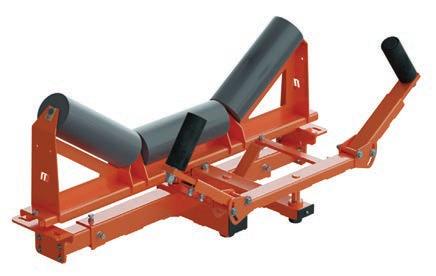



The next generation of tracking technology for a global marketplace has launched. Martin Engineering has been a global innovator in the bulk material handling industry for more than 80 years, developing new solutions to common problems and participating in industry organizations to improve safety and productivity. The highly responsive Martin Tracker HD (heavy-duty) belt conveyor alignment system was designed with widely available plate steel to increase availability and affordability. A mistracking belt produces excessive spillage, which increases labour costs for cleanup and may cause contact with the mainframe, seriously damaging both the belt and the structure and increasing the potential for a friction fire. The new Martin Tracker HD upper and lower units provide immediate, continuous, and precise
adjustment of the mistracking belt. This results in greater productivity with reduced downtime from both equipment replacement and spillage cleanup for a lower cost of operation.
Most OEM mistracking devices are only designed to prevent contact with the stringer and do not realign the belt, resulting in operators spending a lot of time monitoring the system and adjusting idlers to achieve consistent alignment. According to Dave Mueller, product manager for Martin Engineering, “with enough manual adjusting, operators find that idlers must be recentered if there is a change in cargo characteristics or to install a new belt. The Tracker HD automates the alignment process, eliminating the need for constant monitoring and manual adjustments, thus reducing the labor and downtime for maintenance.”
Where the new belt Tracker HD’s unrivaled precision comes from Sensing rollers ride either side of the belt edge and are attached to the end of an arm assembly. As the rollers detect slight variations in the belt path, the force of the wandering belt causes the arms to automatically position a pivoting idler in the opposite direction of the misalignment. The lever action requires less force to initiate the correction and only slight adjustments mean the consistent contact between the belt and idlers reduces the energy needed to bring the belt back into alignment.
“Certain countries cannot buy square tubing, so we are now manufacturing the equipment from readily available plate steel without any changes to the performance or life of the unit,” Mueller pointed
out. “This allows the Tracker HD to be produced and supplied across all global business units,” added Mueller.
Compatibility with most belt conveyor systems
Easy to install and designed to withstand the stress associated with wider, thicker belts moving at higher speeds and carrying heavier loads, the Tracker HD is suitable for a belt thickness up to 28.5 mm and speeds up to 4 m/s. Both the upper and lower units accommodate belt widths of 915 to 1828 mm with an effective tracking distance of 45.72 m.
Available in 20-, 35-, and 45-degree trough angles, there are options for the addition of a Martin Trac-Mount Idler, which allows the entire troughed idler unit to be slid away from the mainframe and safely serviced from outside of the system by a single worker, thus greatly reducing the amount of labour and maintenance time for the replacement of broken or frozen idlers. This is an additional safety feature. Rubber-lagged rollers are available on the lower tracker and a grease kit for the upper and lower assemblies. However,
the unit is “not suitable” for reversing conveyors, belts with substantial rollback, or paddle or chevron belts.
Key is proper placement
The Martin Tracker HDs must be installed after the load zone on belts that are wider than 610 mm, with additional units placed down the system to keep the belt centered and tracking. By placing an upper unit before the discharge, the belt is securely centered on the head pulley, allowing for optimal belt cleaning with maximum cargo discharge.
Regardless of the conveyor, the lower tracker is redesigned to include a unique safety feature. Since the return rollers usually detach and drop, creating a serious safety issue, the Martin Tracker HD has been equipped with safety guarding on the steering roll to prevent the roller from coming off or putting workers in harm’s way. On the return, it is recommended to place a tracker after the discharge zone or take-up pulley, as well as periodically down the system depending on length. To support an efficient loading
process and ensure centered loading, the belt must enter the loading zone aligned, so installing a lower unit that is approximately five times the belt’s width in distance from the tail pulley.
Tested and approved in the field
The basic design of the Martin Tracker HD is like that of its predecessors with square tube construction. Consequently, the testing focused on performance, durability, and installation time. Tested in bulk handling operations including mining and cement where mistracking leading to spillage had historically been a concern, the unit performed up to Martin Engineering’s high standards.
“Martin Engineering believes safety should be a core function in any conveyor accessory we design, and the Tracker HD is no different,” Mueller said. “By automating consistent belt tracking, this solution reduces equipment wear, maintenance time, and downtime. These factors lower the cost of operation, offering the best return on investment of any tracker on the market,” he concluded. CMJ
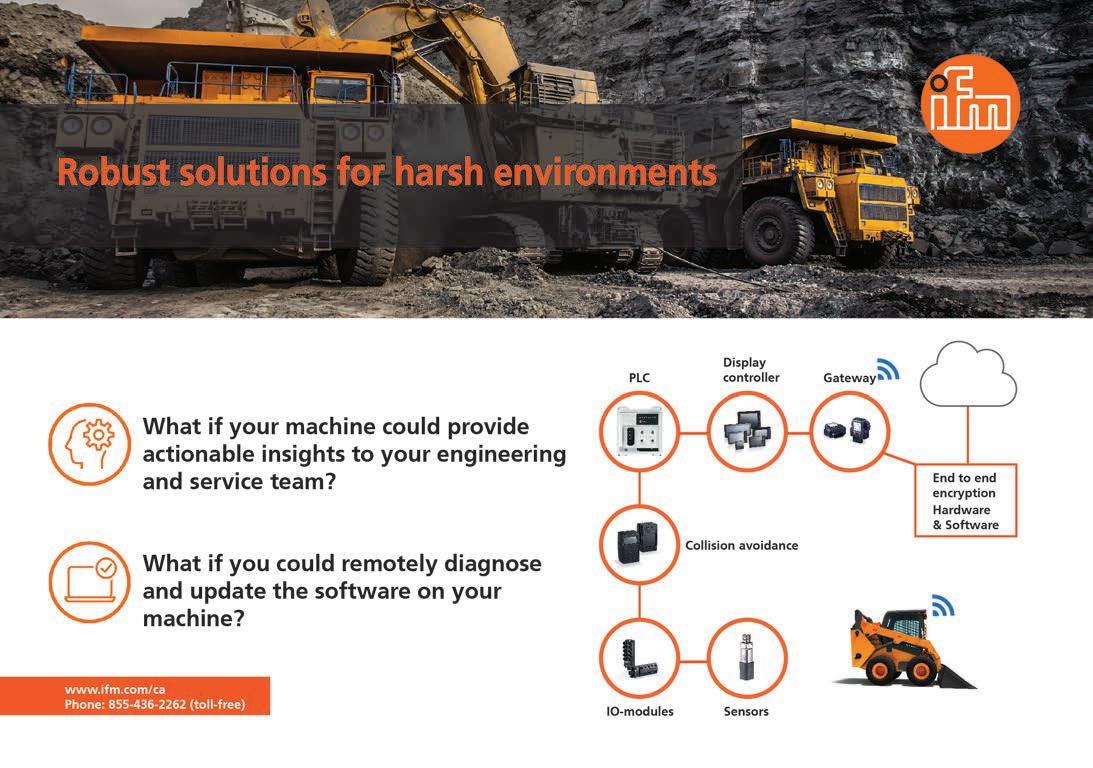
Screen media is often an afterthought for mineral processing operations. In the car world, an equivalent would be tires. When purchasing a new vehicle, buyers are often focused on larger, “flashier” components such as the exterior, engine, or the latest electronic bells and whistles over more “standard” parts such as the tires. However, just as tires are essential to a vehicle’s overall performance, so too is screen media for machinery in the mining industry.
Tires come in different varieties, like screen media. Beyond standard wire screens, many operations choose between polyurethane and high-vibration woven wire. Each has its strengths and weaknesses depending on application. Weighing polyurethane and high-vibration screen media against application, durability, efficiency, and maintenance can illuminate which one is the best choice for production needs.
The actual cost behind cost per tonne
Price is often a motivating factor when choosing between screen media options, but the full story of productivity cannot be summed up by just looking at either screen media panel cost or the cost of production per tonne. Much like a scale, the output amount must be weighed against the quality of the product.
Because of its durability and longer wear life, synthetic media such as polyurethane is often selected as a lower-cost option, since it requires fewer replacements than high-vibration screens. Its durability is also effective when used to handle high-impact material screening such as dewatering or when processing large amounts of minerals with little risk of pegging or blinding.
However, polyurethane panels trade durability for less open area and are much more rigid, therefore relying on the vibrating screen to do most of the work. The static movement of the screens limits vibration to 800-900 cycles per minute, which can decrease throughput and invite blinding and pegging with finer minerals. In comparison, high-vi-
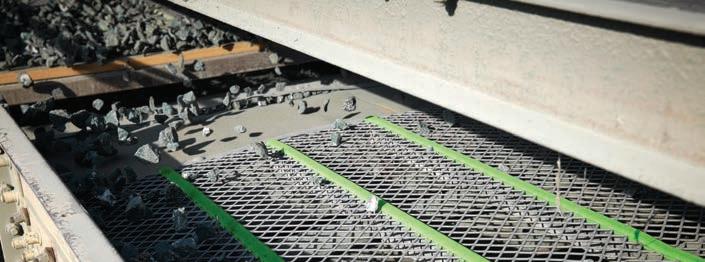
bration screen media has as much as 50% more open area than polyurethane, which allows more material to be sized accurately in less time. This result is achieved through the high frequency of its wires (8,000 to 10,000 cycles per minute) that adds to the vibration of the screen box to speed up material separation and passing. This performance requires more changeouts of screens because unprotected woven wire breaks more easily than polyurethane. The trade-off to more frequent replacements is that the increased screening action improves material throughput, virtually eliminates pegging and clogging across the top and bottom decks and yields a better-quality product. With high-vibration screen media, a higher investment upfront can lead to greater production gains down the road.
It should also be noted that while polyurethane screens currently outlast wire products, this gap has been closing. The inclusion of polyurethane strips within the design of high-vibration wire boosts its durability without sacrificing open area. This addition means that high-vibration panels can withstand harsher screening conditions with the most abrasive materials.
In some applications, the strengths of polyurethane and high-vibration screens can complement one another. In cases where the top deck receives heavy material with a high impact and requires a longer wear life, using a synthetic screen would be best. Once the polyurethane
has taken the impact and the material is spread out more easily on the lower deck, a high-vibration screen can be used to overcome the limitations of the open area of the synthetic screen and produce more throughput. One industry case study reveals the benefits of such a pairing. An operation running polyurethane panels on the top deck and woven wire screens on the bottom decks experienced diminished throughput because of the low open area as well as poor material stratification and pegging and blinding issues. Replacing the middle deck with a high-vibration panel tripled its operational life, eliminated pegging and blinding, and resulted in a 200% increase in production volume.
Many synthetic panels are made up of soft polyurethane, which means that they can be up to 10-db quieter than wire screens. Lower noise levels reduce occupational noise exposure for plant personnel and the associated potential for hearing damage.
One downside, however, is that less noise can mask underlying performance and maintenance issues. Tears in the panel are not visible, which means performing quick visual checks for them is not feasible. Also, these tears can lead to larger, less precise openings over time and therefore out-of-spec, potentially contaminated material coming through. Operators are only alerted to an issue when performing an assessment of the
panels or when the opening is large enough that the material starts to flap when in motion. At this point, the quality of material may have already been significantly impacted. In contrast, while it is noisier, high-vibration screen media only requires a visual check each shift to assess any issues.
In one industry case study, an operation screening salt materials was only changing out its polyurethane screen media every eight months, but they noticed the panels passing out-of-spec minerals. Switching to high-vibration panels not only solved the issue but also eliminated pegging and extended the changeout time to two years.
A tailor-made approach
There is no one-size-fits-all when it comes to screen panels and fit. Sizing that is even a fraction of an inch off can have tonnes of impact in terms of quality screening. While polyurethane panels come in a variety of options for different screening needs, custom-designed high-vibration screen media can often ensure a perfect
fit and more precise screening.
Whereas some custom high-vibration options are suitable for high-impact, heavy-material applications that still need a good amount of open area, others are ideal for low-impact, finer, or more sticky material. Despite their different uses, each custom-fit option is designed to strike the right balance of wear resistance, throughput, and blinding and pegging resistance to meet processing demands.
When ordering screen media, operations should look for a reputable manufacturer that uses first-class materials and a thorough manufacturing process to ensure that they are receiving the best possible product to achieve the strongest possible results. Whereas global supply chain issues may lead to some manufacturers cutting corners and using less than stellar materials in their wire, others are uncompromising in the composition of the final product they deliver to their customers.
Bottom line
Just as drivers need high-quality tires

TNM

that offer excellent tread for enhanced traction and safety, so too do mining operations need high-performing screen media that provides higher throughput alongside reduced downtime, maintenance, and replacement costs.
When making the best purchasing decision for your operations, added value should replace cost per tonne. At the outset, polyurethane may seem like a cheaper alternative to many premium high-vibration wire products. In the longer term, customized high-vibration screens offer a more cost-effective and high-yield solution.
It may also be that a combination of both options can help you to maximize production while retaining quality. Partnering with an OEM-certified technician is a cost-effective first step towards identifying problems and solutions and selecting the screen media that fits the application and the distinct phases of screening in your operation. CMJ
Serge Raymond is a product specialist at Major Screens.





Search more than 13,900 global mining properties for the right contact and connect with them directly through a single click. Learn
















2,600 global mining companies and 13,900+ properties by just asking a question.











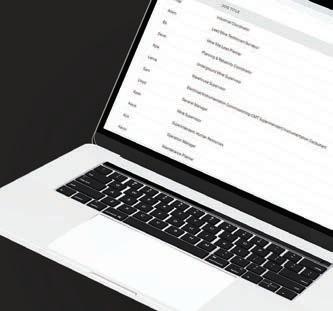
















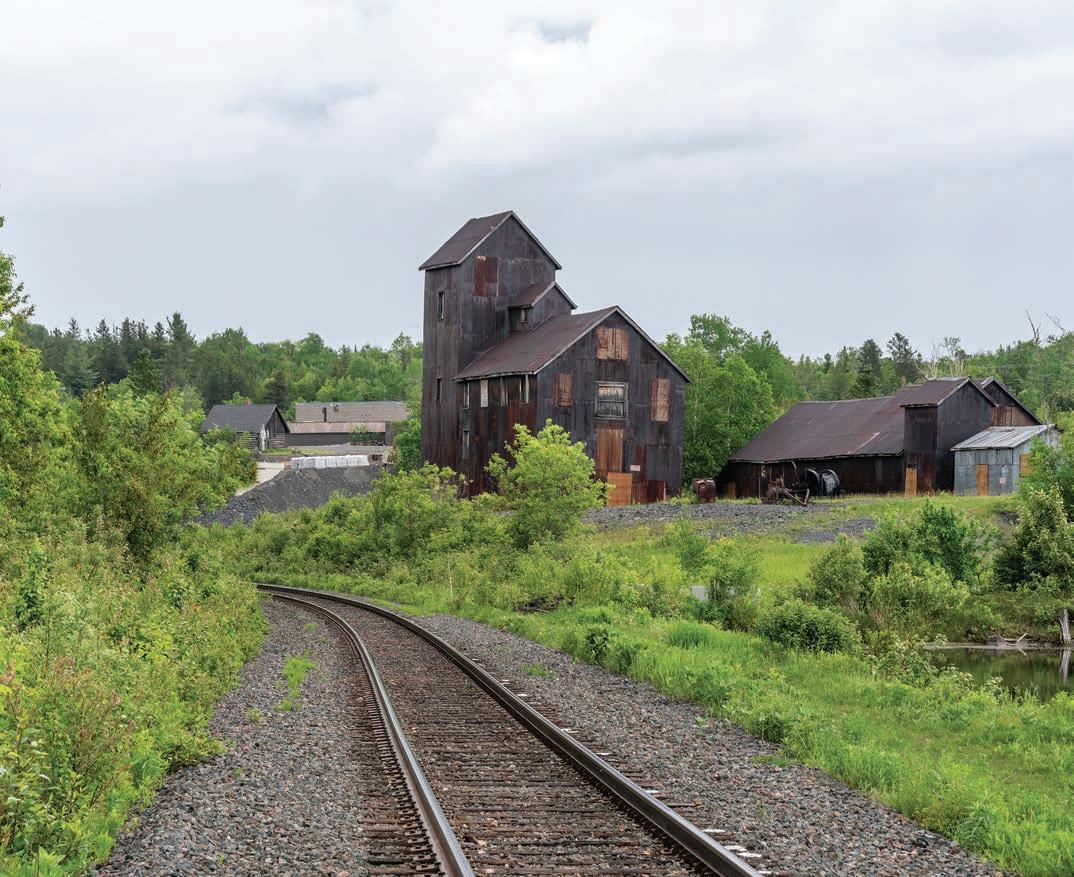
Every mine develops at a different pace. The discovery of a major mineral deposits may create feverish excitement, but an actual mine may remain undeveloped for decades, waiting for a favourable alignment of investors, infrastructure developments, or market conditions. Some mines develop rather suddenly, however, leading to the “rush” conditions that have been romanticized in popular culture. Mineral rushes may lead to riches for some, but they also can create impossibly difficult conditions for miners and their families, including poor housing, hunger, diseases, and high accident rates in the mines.
One of the most rapid and disruptive precious metal rushes in Canadian history occurred at Cobalt, Ont. The first inkling of the rich silver in the area was when two railway construction workers, J.H. McKinley and Ernest Darragh, found
silver flakes in rock near Cobalt Lake while working on the Temiskaming and Northern Ontario (T. & N.O.) railway in 1903. Legend has it that the blacksmith Fred LaRose discovered another highgrade silver deposit when he hurled an axe at a fox, the errant throw overturning a rock rich in silver. While Charlie Angus’s recent history of Cobalt suggests the fox incident was a tall tale, the silver was very real. As word of the discovery leaked out, prospectors flooded into the region (an office in nearby Haileybury issued 6,000 prospecting licenses by the autumn of 1905). By early 1906, the population of Cobalt had risen to 1,500, and 16 mines had opened in the surrounding region.
The result was widespread chaos. Historians Doug Baldwin and David F. Duke have highlighted how social and physical planning for the new town of
By John SandlosCobalt was almost non-existent. Cobalt’s residents built streets, houses, and shops in a haphazard way, while the mining companies exploited the silver at the surface through extensive trench networks that sometimes ran through the town. The mining companies retained surface and sub-surface rights to much of the town’s land base, however, and thus could evict those whose buildings stood in the way of mine expansion. When Coniagas Mine announced plans to mine in northwest end of Cobalt, displacing not only residents but also established businesses, the town of Cobalt took legal action. In 1910, a court ruled in favour of Coniagas’ mineral rights but gave the town control over streets and highways. The legal compromise was entirely in keeping with the reality of life in Cobalt, where commercial, residential, and
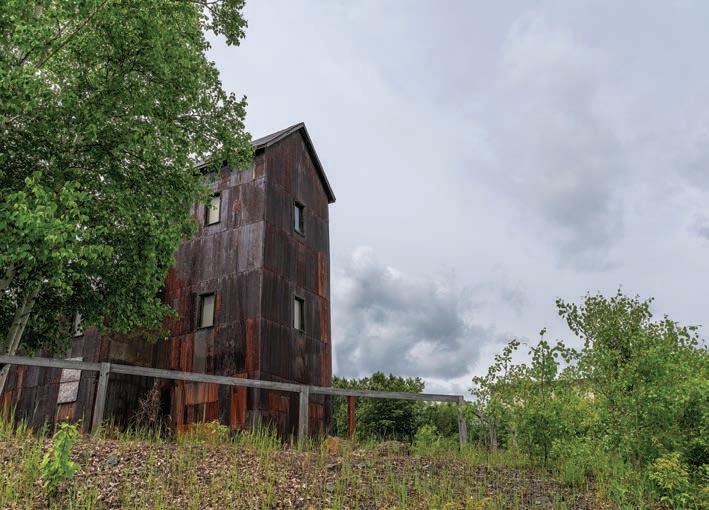
industrial development all coexisted in an uneasy compromise with one another.
The poor planning of Cobalt’s infrastructure carried real consequences for residents’ health and safety. The lack of adequate sewage meant that residents used poorly constructed privies for their toileting needs, and workers at the mines simply relieved themselves wherever it was convenient. With no plans in place for managing surface runoff, water leaked into and from the shallow pits of human waste and mining trenches, carrying a dangerous brew of biological pathogens and heavy metal contaminants that eventually found its way into nearby lakes. In 1905, the Provincial Board of Health predicted a disaster, noting that “garbage, wash water, urine, and feces all mixed together in frozen heaps out in the open. The cold has been steady so far and all is frozen, but when the thaws come, the accumulations will all be washed in the valleys and the lake, polluting water sources. If nothing is done, then in all human probability, there will be a severe outbreak of disease in and about the settlement.” Sure enough, in July 1909, the poor sanitary situation resulted in a typhoid epidemic that sickened 1,100 residents and claimed the lives of 67 people. It took two more years before the town finally managed to build an adequate water and sewage system.
Early in that same disastrous July of

Inset: Looking into an old silver mine in the small historic
CREDIT: JOHN/ADOBE STOCK1909, a fire also spiraled out of control in Cobalt. While the blaze had started in a Chinese restaurant, with the New York Times reporting that “feeling against all Orientals is strong, and it is feared they may be driven from the district,” the real reason the fire has spread was the lack of running water and firefighting equipment. By the time it burned out, the fire destroyed 150 buildings and forced 3,000 people from their homes. A few residents went on a looting rampage (the New York Times suggested they were “carrying off everything in sight”), but most displaced residents ended up sheltered in the local theatre and roller rink. It was here that the typhoid outbreak likely gained its foothold, compounding one disaster with another as residents desperate enough to drink contaminated water lived in tightly packed conditions ripe for human-to-human transmission of the disease.
It is perhaps not surprising that the deadly chaos aboveground extended into the mines, especially after 1907 when Cobalt’s mining companies began to abandon trenching and sink shafts into the underground. Ontario’s Bureau of Mines noted in its annual report for 1909 that 30 of 47 fatalities in Ontario the previous year had occurred in one of Cobalt’s mines. This number represented a significant increase from the 22 fatalities recorded in 1907 and a remarkable
upsurge from 1906 when there had been only 11 mining deaths in the province. E.T. Corkill, Ontario’s Inspector of Mines, argued “there is no doubt that in a boom camp such as Cobalt has been in the last three years, there is a spirit of feverish speculation and unrest that tends to the disorganization, lack of discipline, and loss of efficiency of both the men and those in charge.” Miners died owing to a variety of causes: falling down a shaft, riding on an unsafe ore bucket, or breakage of the cable attached to a cage. Corkill noted that the most prolific cause of accidents was explosives, with miners often striking unexploded dynamite while they mucked ore after a blast or drilling into old holes to save time (sometimes on the workers’ own initiative, and sometime under pressure from foremen). Although the safety record at Cobalt’s mines improved over time, 114 miners died in the region between 1905 and 1913, 41% of all fatalities in Ontario’s mines.
Cobalt’s silver rush was not without its successes. Developed only five years after the Klondike gold rush, Cobalt was a globally significant silver producer that proved precious metals could be found in the more eastern reaches of the Canadian Shield. Cobalt drew investment dollars, prospecting talent, and mining expertise to northern Ontario, and then exported these same things to stunning new precious metal finds in Timmins, at Kirkland Lake, Quebec’s valley of gold, and Yellowknife. But even if Cobalt deserves its pride of place as one of the most important mining regions in Canadian history, it is also important to remember the extreme challenges and danger encountered by the miners who lived and worked there. CMJ
John Sandlos is a professor in the History Department at Memorial University of Newfoundland and the co-author (with Arn Keeling) of “Mining Country: A History of Canada’s Mines and Miners,” published by James Lorimer and Co. in 2021.
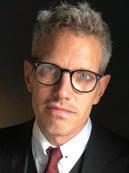







» C2C Gold named Scott Davis CFO.
» Eldorado Gold Corporation appointed Paul Ferneyhough as EVP and CFO.
» Electra Battery Materials named David Allen CFO.
» First Mining Gold named James Maxwell VP exploration and project operations.
» Forum Energy Metals named Allison Rippin Armstrong VP Nunavut affairs.
» Galway Metals promoted Jesse Fisher to project manager, Clarence Stream, and hired Robert Richard as head of exploration.
» J. Frank Callaghan is the new president, CEO, and a director of Golden Cariboo Resources
» Highrock Resources named Derrick Dao as CEO and director.
M:
» Imperial Mining Group named Guy Bourassa as CEO. Former CEO Pierre Neatby becomes COO and retains his role as president.
» International Copper Association installed Juan Ignacio Diaz as its new president and CEO.
» K92 Mining promoted David Medilek to president and CEO and Chris Kinver to VP projects and engineering.
» Landore Resources announced Glenn Featherby will be interim CEO. Michele Tuomi will continue as CEO Landore Resources Canada.
» Simon Ingram is now president, CEO, and a director of Lara Exploration, with Miles Thompson remaining as chair.
» OceanaGold appointed Bhuvanesh Malhotra as chief technical and projects officer.


» Osisko Development said
COO Luc Lessard has retired to become president and CEO of Falco Resources. Director and chair Eric Tremblay will be interim COO.
» Patriot Battery Metals said Ken Brinsden will transition to Quebec-based CEO and president.
» SafeSight Explorations added Steve Parry as director of strategic alliances.
» Seabridge Gold promoted Ryan Hoel to the role of president and CEO and Tracey Meintjes to senior VP technical services.
» Soma Gold CEO Javier Cordova Unda has stepped down temporarily, but he retains his duties as president. Chair C. Geoffrey Hampson becomes interim CEO.
» Spanish Mountain Goild made
the following changes: Becke Gray as PMP project manager and Mathew Lee as VP finance.
» Robert Eadie is now president as well as CEO of Starcore International Mines
» As Moneta and Nighthawk merge to become STLLR Gold, Keyvan Salehi will become president, CEO, and a director.
» Tincorp Metals named Victor Feng, the PV corporate development, to be interim CEO following the resignation of Gordon Neal
» Wedgemount Resources named Steve Vanry its new CFO.
» Western Copper and Gold added Paul Hosford to the engineering team as senior director.
» Gordon Neal joined World Copper as president and CEO.
» C2C Gold named Eric R. Keller a director.
» Donald Birak joined the board of Camino Minerals
» GoviEx Uranium named Allison Fedorkiw to the board.
» Great Eagle Gold added Patricia I. Kovacevic and Larry Segerstrom to the board.
» Great Pacific Gold named Chris Muller to the board.
» Norseman Silver gave Merlin Marr-Johnson a seat on the board.
» Samantha Espley is now on the board of Northern Graphite
» Orezone Gold appointed Sean Harvey to the board.
» Osisko Gold Royalties added David Smith to its board.
» Benoit Desormeaux, Martin Milette, and Richard Roy joined the board of Quebec Rare Earth Elements
» Silver Mountain Resources added W. John DeCooman, Jr. to the board.
» SSR Mining named Daniel Malchuk to its board.
» Donald Birak joined the board of Camino Minerals
» As Moneta and Nighthawk merge to become STLLR Gold, the board chair will be Josef Vejvoda, and the other seats will be filled by Morris Prychidny, Blair Zaritsky, Edie Hofmeister, Rodney A. Cooper, and Krista Muhr

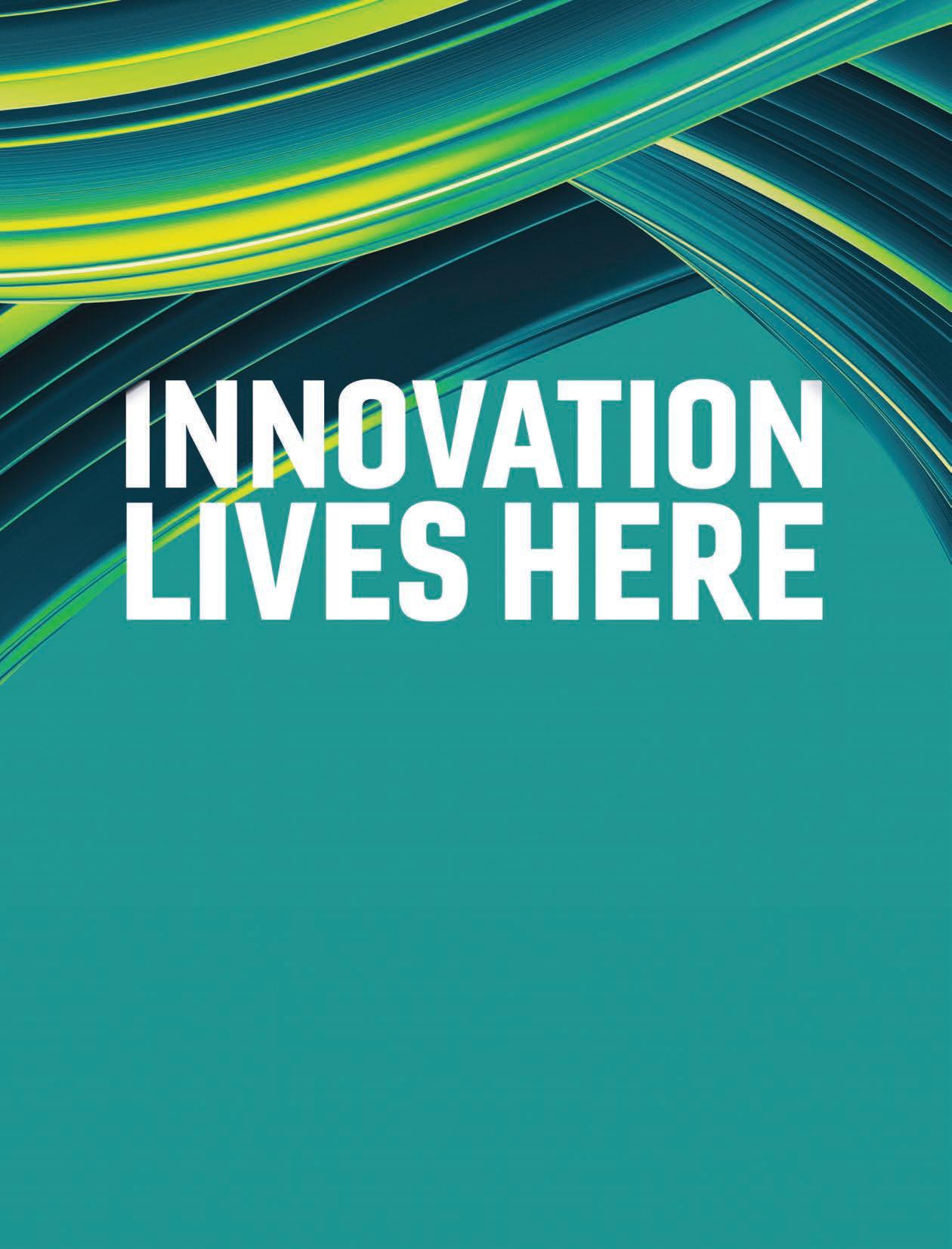
DISCOVER THE LATEST MINING EQUIPMENT AND TECHNOLOGY.
MINExpo INTERNATIONAL 2024 is coming back to Las Vegas! At the world’s largest global mining event, you will uncover new products and transformative technology that can help you increase productivity and safety. Massive machinery. Innovative solutions. Essential resources. Every element from exploration, planning and processing to safety, sustainability and reclamation is here.
Ifyouwant to significantly increase productivity, reduce energyconsumption, and extend tool lifeyou need the most advanced top hammertool system ever made. Meet the curved thread CT55 and CT67 for hole sizes from 89 to 140 mm.





